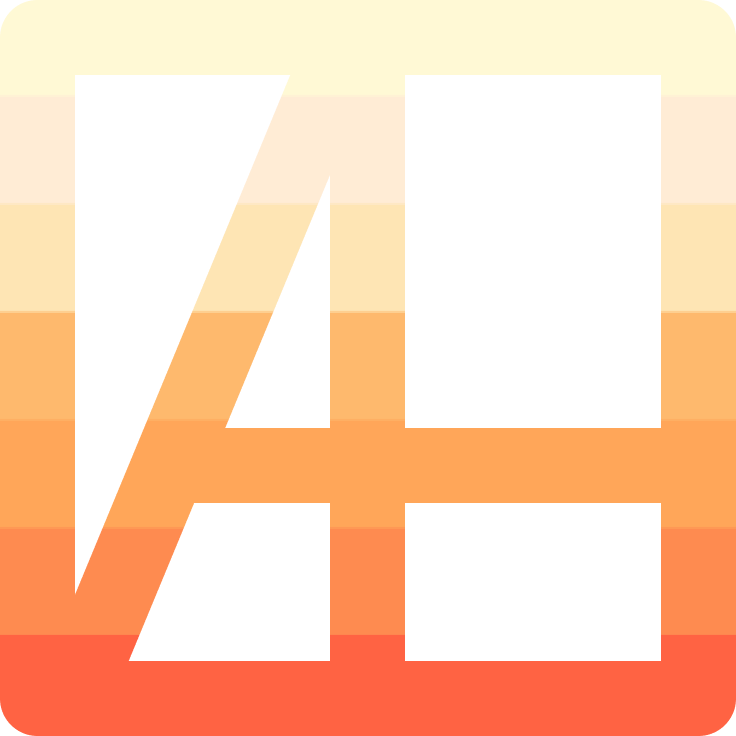How to Become a Published Book Author in Less Than 40 Days
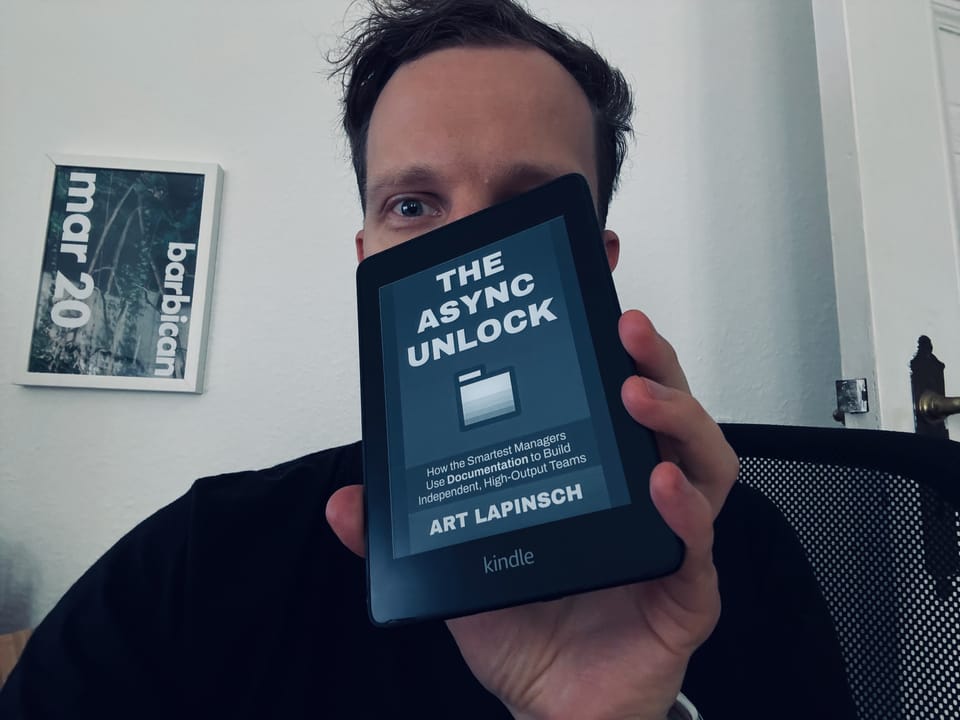
I published a book on Amazon and it took less than 40 days start to finish.
This post gives you a peak behind the curtains: All the steps, all the workflows, and all the tools to go from idea to seeing your brainchild on the storefront of the internet.
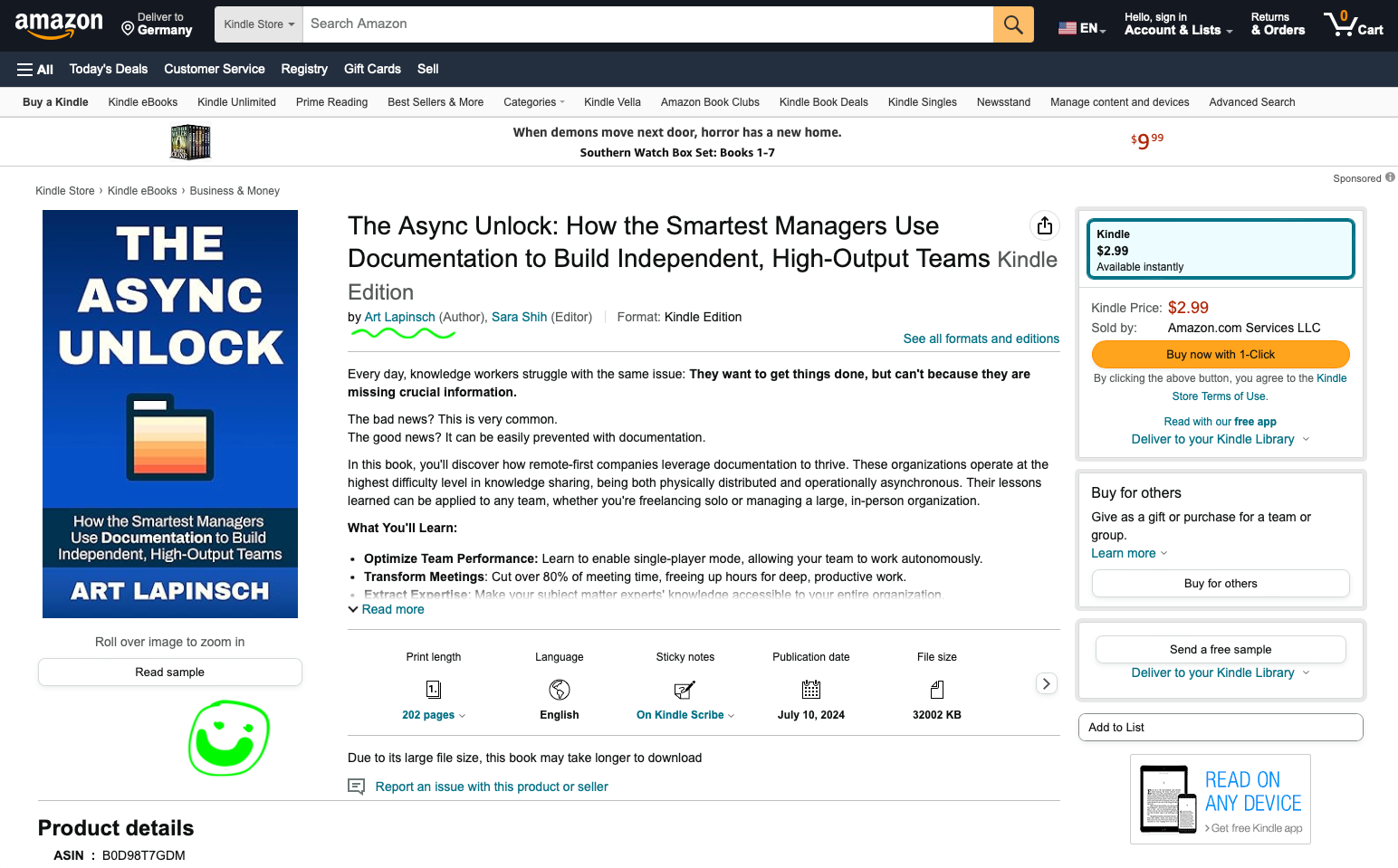
If you have been following my writing and want to help me out, then please check out my book (and write a kind Amazon review if you liked it).
Eternal gratitude is yours.
1. This link above is for the Amazon/Kindle US store. So if your account is currently registered for a different region, it will tell you "This title is not currently available for purchase"
No problem. Just go to your regular Amazon store and search for "The Async Unlock." This should do the trick.
2. You can't buy Kindle books via Amazon's mobile app. Why? Because they hate Apple Inc. and don't want to pay them 30% app store commission.
PS: You live and you learn 🤦♂️
For all the others who want to learn how to self-publish an eBook, this 8,000-word guide will hopefully inspire you to write your own book. You would be surprised how doable that is.
Shall we?
(tip: if you received this via email, please click the title of this essay [above] to enjoy the full reading experience in your browser. It looks much nicer.)
Why The Hell Write a Book?
In early June, I had a week to myself. No calls. No events. No obligations.
And naturally, my monkey brain started tempting me: "How about finally working on that book idea?"

But why even bother writing a book?
I've been writing and publishing online for more than a decade. Hundreds of thousands of words in blog posts, email newsletters, and throw-away social media posts.
Then, one day, I read Rob Fitzpatrick's book "Write Useful Books." It outlined a clever idea: Write useful books that are inherently recommendable.
If such a book solves a specific problem for a small audience, then you might have a useful book. If it solves their specific problem, it might also solve the same problem for their friends. And so the recommendation loop begins. No marketing needed.
I felt that this was a clever idea and started thinking whether I had any useful ideas. And there actually was. I have helped many entrepreneurs to fix their internal communication challenges. Over and over again.
This got me thinking and my curiosity got the better of me. And so the journey began by committing to this project in public 👇
What Was the Scope of this Project?
Long story short:
- In 2021, I wrote a 15,000-word online course about "Documentation for Remote Teams" - it bundled all the lessons from building our remote company from idea to exit
- The content was delivered via automated emails (i.e. Email-based Course [EBC])
- I thought it would take me roughly 1 week to "clean up" the content for eBook publishing
- It didn't 🤷♂️
I set myself an aggressive, because (a) I wanted to be done with it before my regular schedule would pick up, and (b) because I didn't know how much effort it would actually take 🙄
Why Republish an Old Manuscript?
Since this was my first book publishing project, I figured using old content would accelerate things:
- Faster to publish
- Faster to get feedback
- Faster to accrue lessons learned
Originally, I had spent five months writing this god damn thing. I don't know if have been writing on something over an extended period without external feedback. It is like working for months in solitary confinement. I would not recommend it.
Pro Tip: Try to publish the content as you write it. This will (a) give you real-life feedback and (b) provide you with "small wins" that will keep you sane.
Here are some screenshots to show you the original output 👇
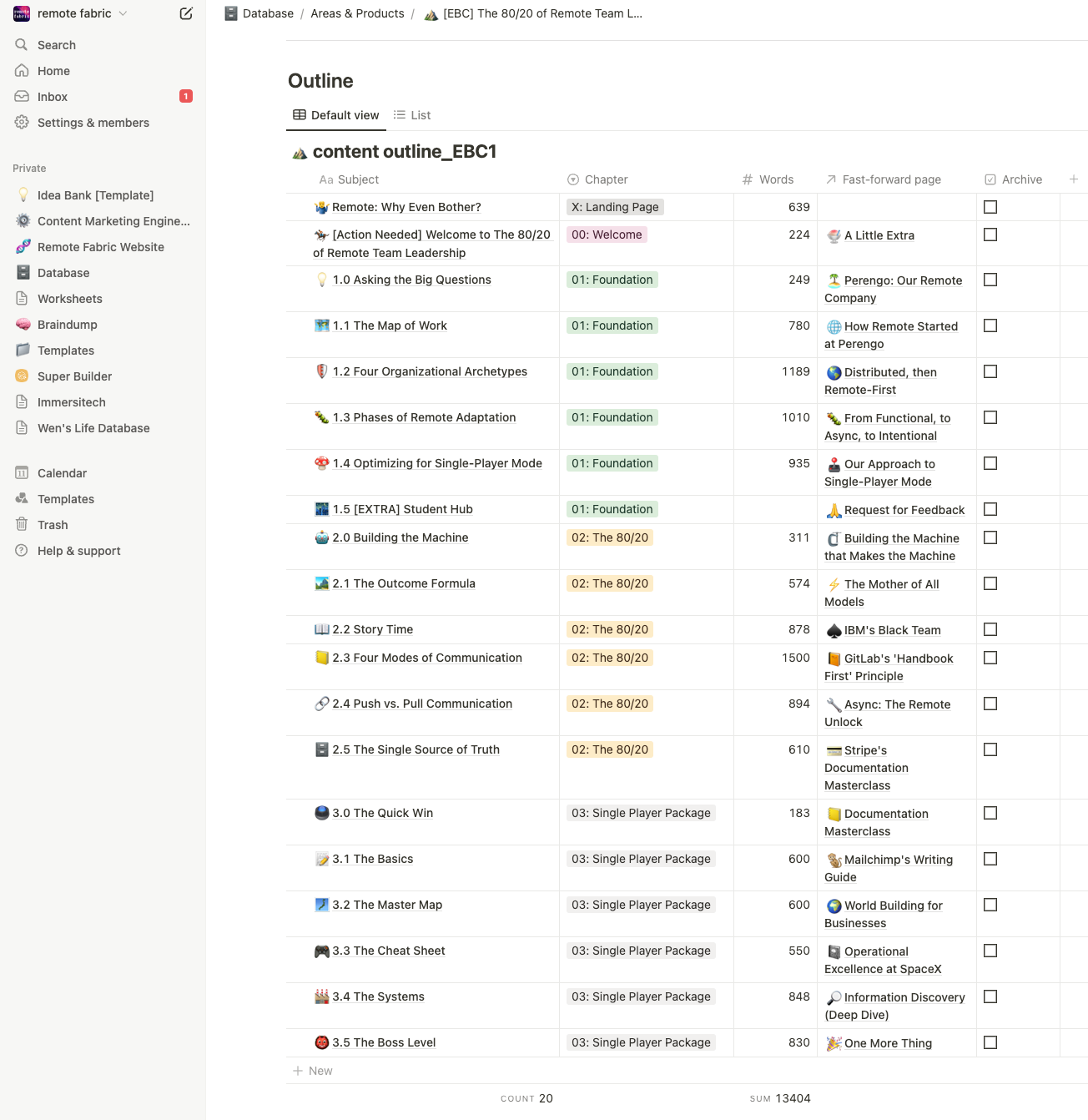
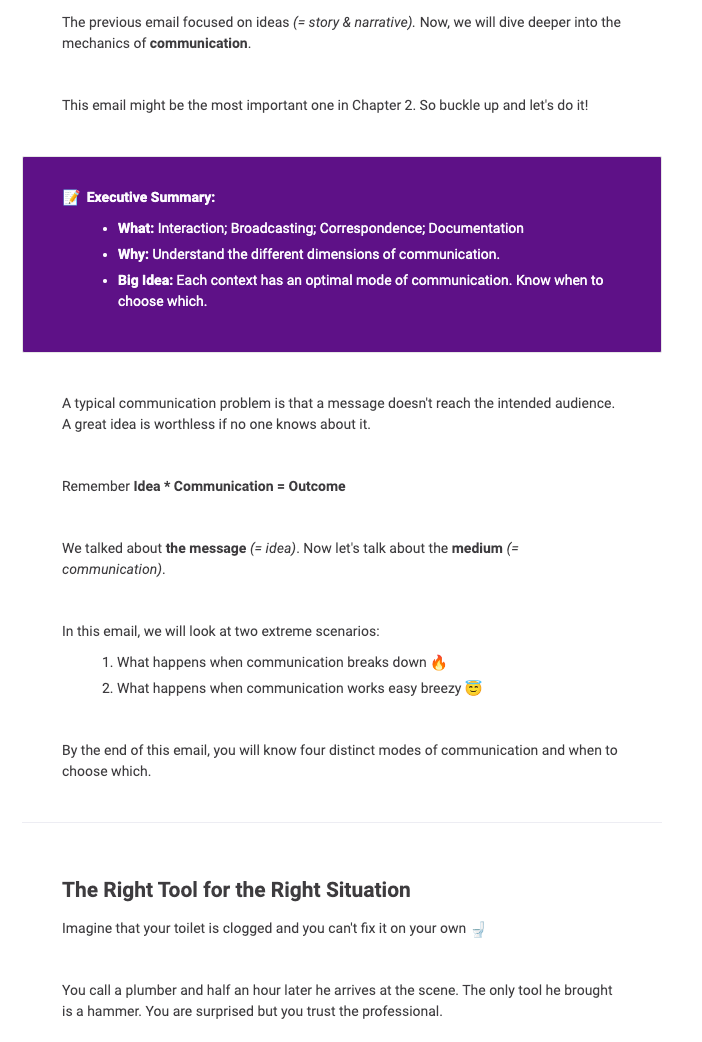
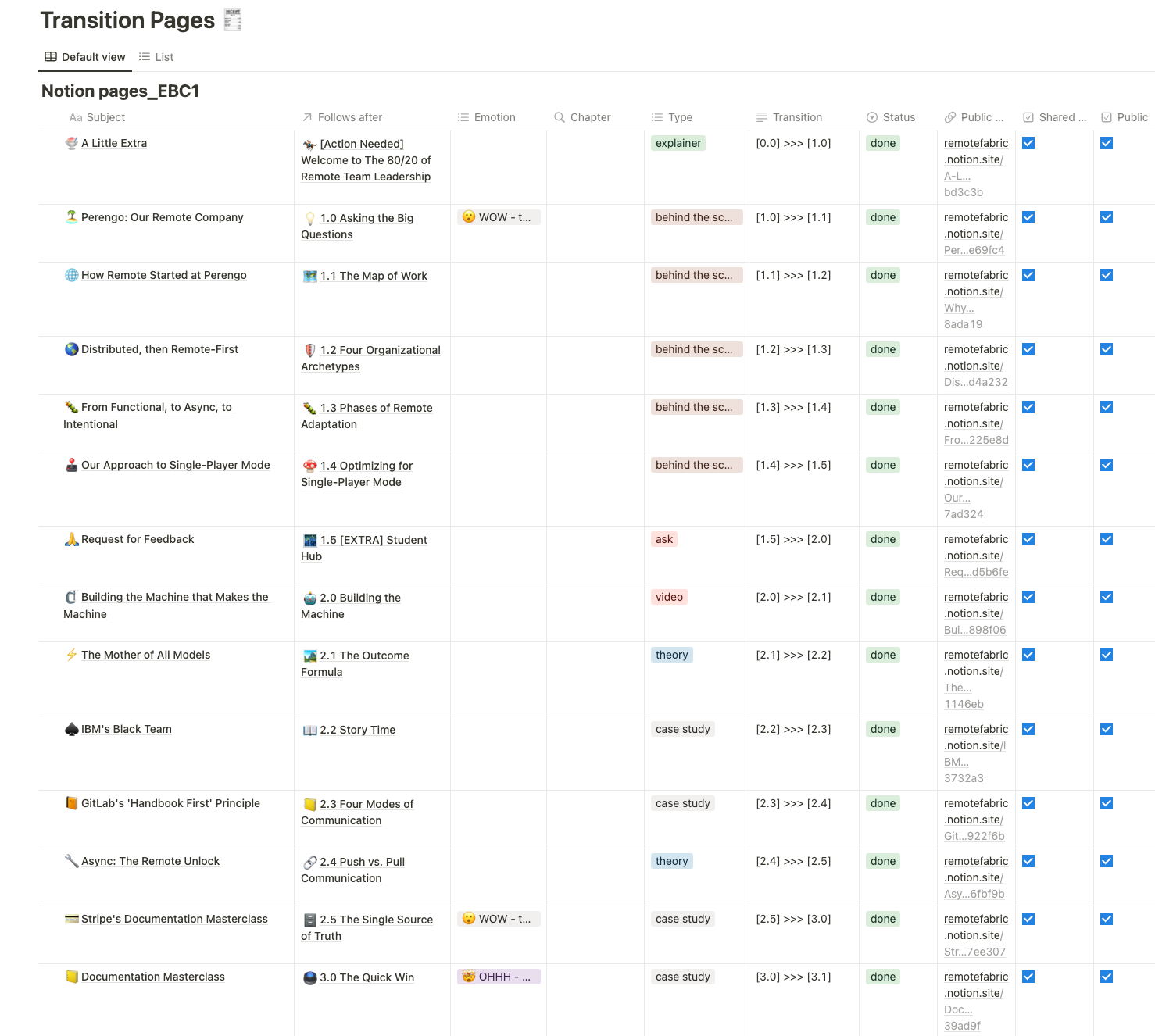
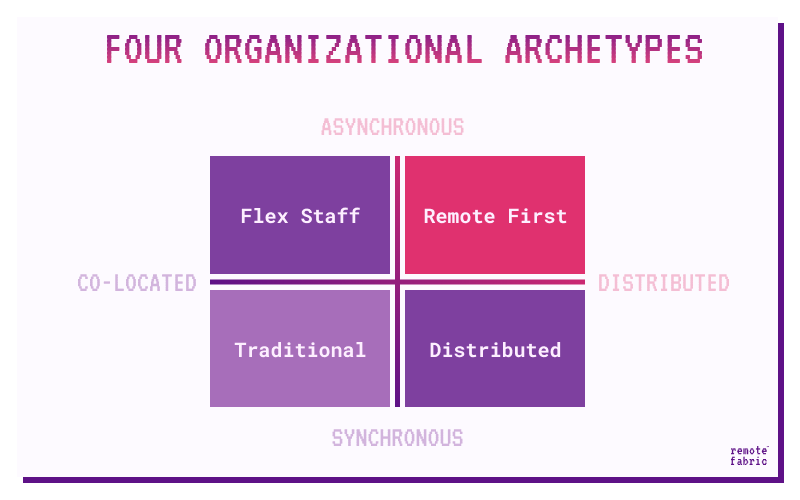
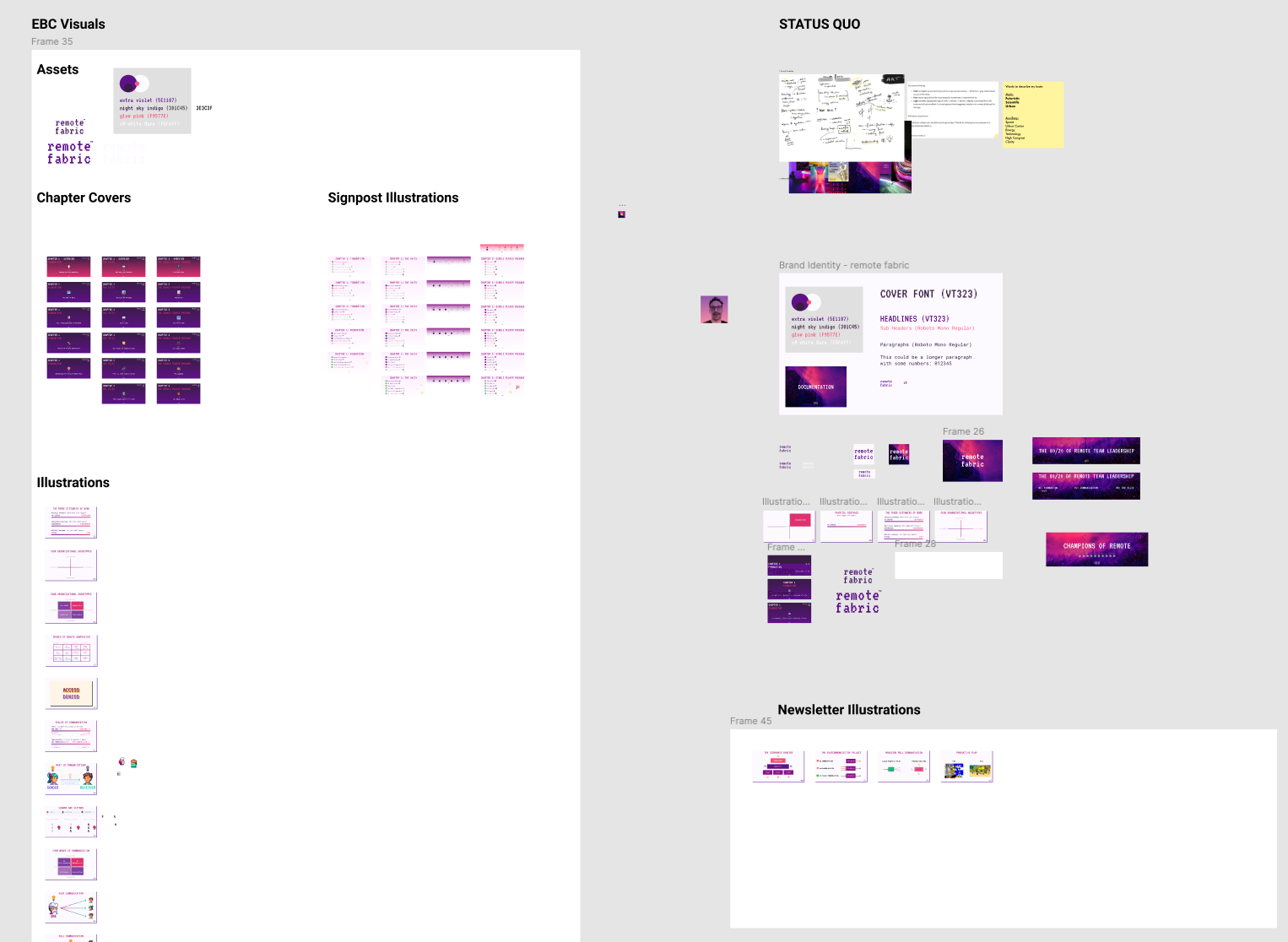
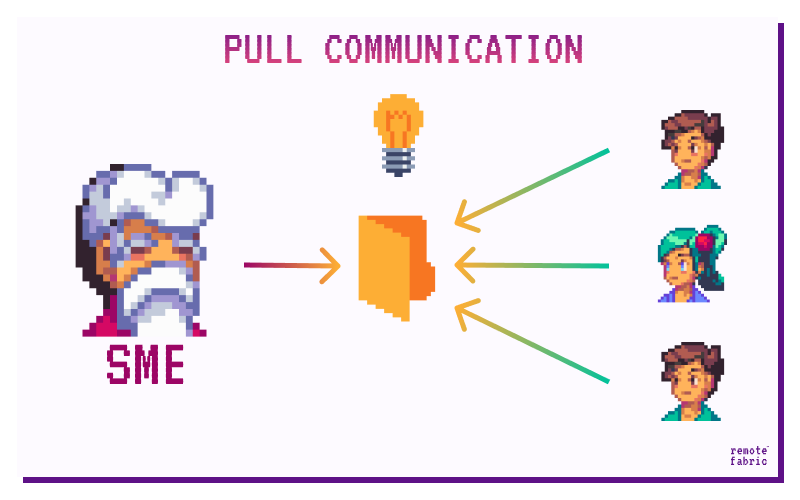
From top/left to bottom/right: 1. DB with main content/emails; 2. sample of a course email; 3. DB of in-between pages with additional content; 4. illustration of org archetypes; 5. screenshot of my Figma instance where I designed the illustrations/figures/covers; 6. illustration of the Pull Communication concept
I noticed one thing pretty quickly: I would need to re-write pretty much everything. This was because formatting conventions for email courses and eBooks are vastly different. I'll share more details further below.
Nonetheless, this was a great starting point, since I wouldn't have to start from scratch.
Self-Publish eBook on Amazon.com
Before starting to work on the project, I read a couple of helpful blog posts:
- A Quick and Dirty Guide to Book Publishing for Entrepreneurs (Corey Wilks) - Great intro into the differences between traditional publishing, self-publishing, and hybrid publishing.
- From Blog to Book: How I Self-Published The Pathless Path On My Own Terms Over 14 Months (Paul Millerd) - Paul's 8,000-word blog post about self-publishing his best-selling book "The Pathless Path"
- My Self-Publishing Journey & Lessons Learned (73 Page Slide Deck) (Paul Millerd) - A helpful summary of Paul's mega post from above
- I sold 50k books (and I didn't predict this either) (Paul Millerd) - Update from the third year of selling the Pathless Path
I developed three convictions:
- I want to self-publish: First of all, a traditional publisher wouldn't pick me up. But more importantly, self-publishing would give me (a) full creative control, (b) better earnings through higher royalties (70% vs. 10-15%), and most importantly (c) a much faster way to get the product out into the market (1 month vs. 1 year).
- I will self-publish on Amazon KDP: Amazon Kindle Direct Publishing (KDP) is a platform that allows independent authors to self-publish their work in various formats (eBook; paperback; etc.) Best of all, it is completely free to publish via Amazon KDP.
- I will only publish an eBook: To keep things simple, I decided to stick to only one format - Amazon Kindle eBook. As long as I could export my content in an .epub file and create a .jpg cover image, I would have everything need for self-publishing a Kindle eBook. Also, physical books cost money to print, which cuts into royalties.
Most importantly, Amazon/Kindle/eBook seemed to be the highest volume channel from Paul's experience. This slide in Paul's summary explains this well 👇
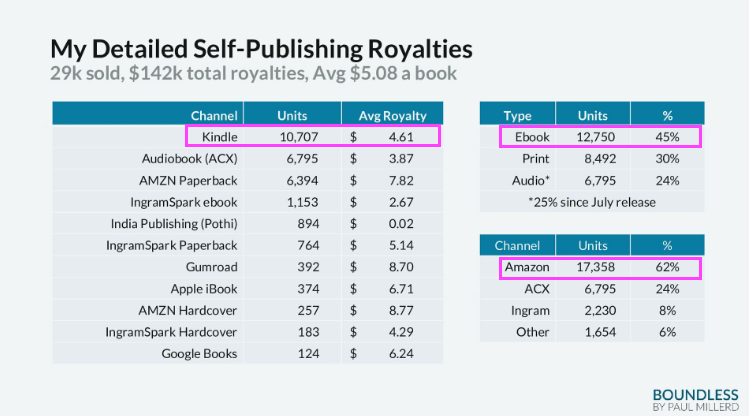
Now that I knew what I wanted to publish and via which channel, I could get into the how.
The Step-by-Step of Going from Idea to Finished Book
All steps, tools, and workflows were free of charge. Free as in free beer.
(Re-)Writing
The first question was: Where can I (re-)write my content so that I can export it into the correct format?
In Paul's blog post, I stumbled over Reedsy - a free browser-based editor that is tailor-made for book publishing. Great!
After setting up a free account it was pretty easy to get used to the particularities of the editor. My favorite features were:
- Dynamic Table of Contents: The editor automatically creates a ToC that mimics the chapter titles and/or Headings (H1/2/3) that you want to see in the overview. I cannot stress how important this is. No more fiddling in your Word document.
- Export into .pdf and .epub: This is table stakes but I was pleasantly surprised that they didn't charge you to export the book. Reedsy makes its money as a talent community - they have professional editors that you can book to edit your book and Reedsy takes a cut on this transaction.
- Easy Outlining: Content is organized in Parts and Chapters. My book, for example, has six parts in the body of the book (i.e. about this book; understanding work; understanding communication; putting it into practice; conclusion; appendix). Each part consists of multiple chapters. You can move all of these around via drag and drop. Super easy.
- Present Sections: Reedsy has some useful sections for the front matter (i.e. copyright; dedication; epigraph; table of contents; foreword; preface; acknowledgement) and back matter (i.e. notes; about the author; also by the author) that you can toggle on or off.
- Built-in Spell Checker: Very useful. This meant that I didn't have to copy/paste all the content into a separate tool to do my spell checking. Also, it allows for bulk changes - similar to how you would do it in a Word document.
- Simplicity: It's a no-frills editor. No smart features, no AI-enabled stuff, no gimmicks. This is great for uninterrupted writing.
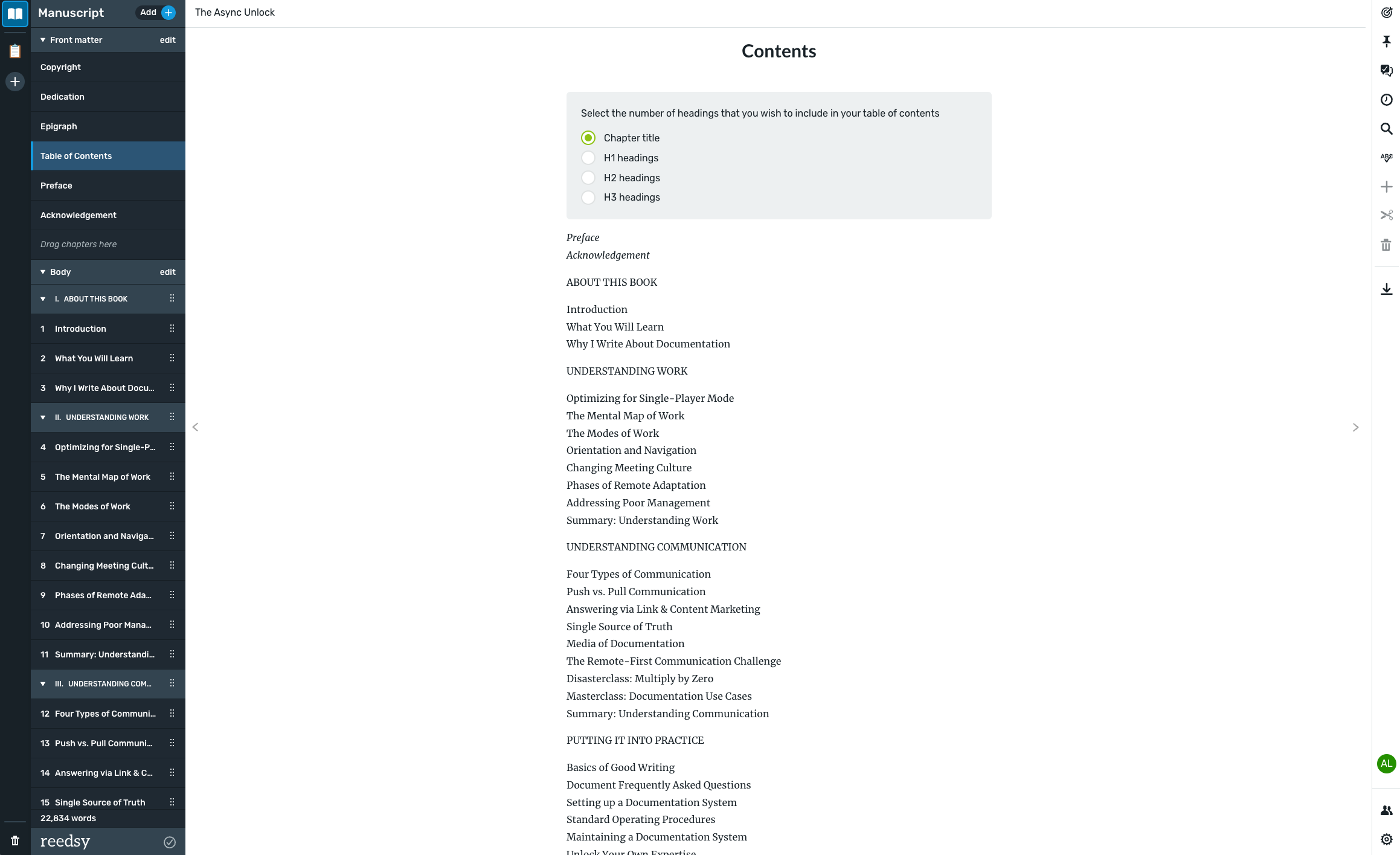
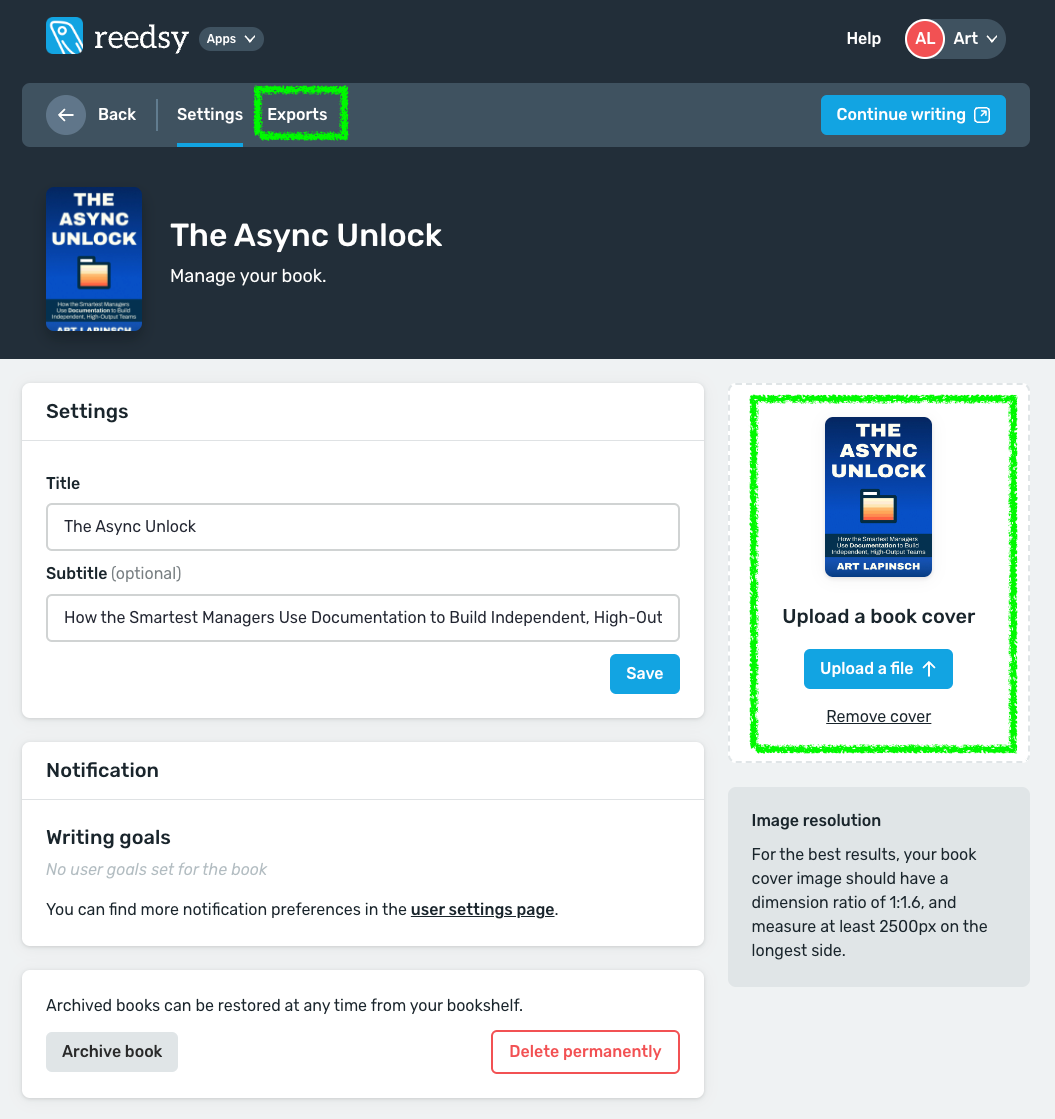
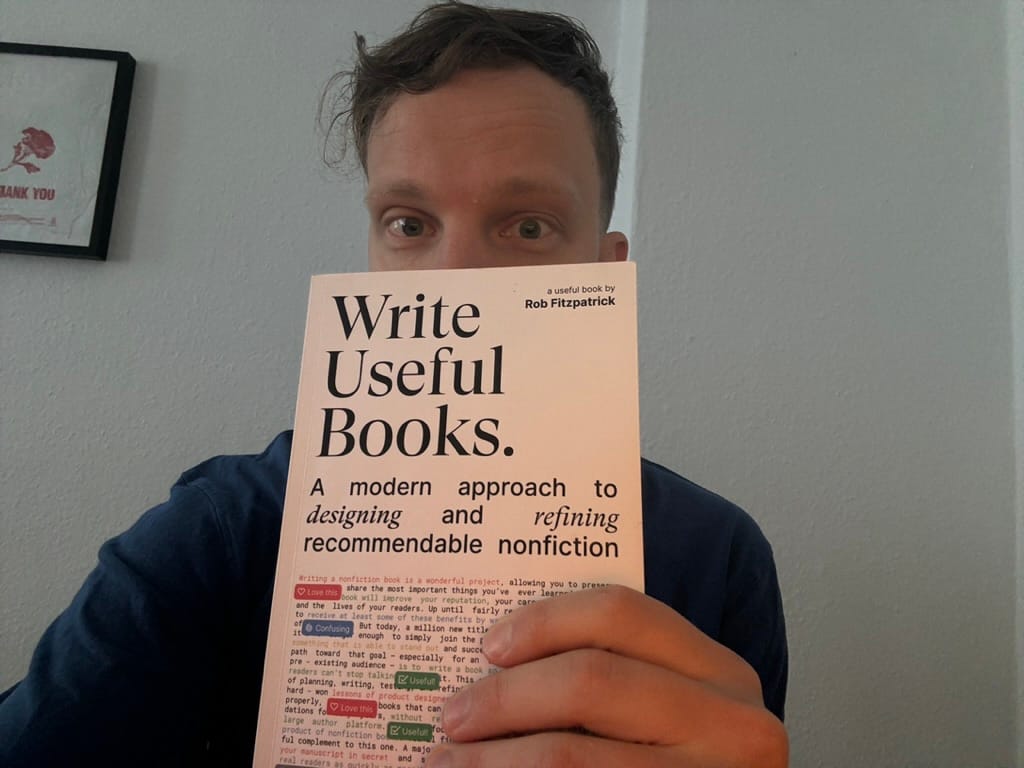
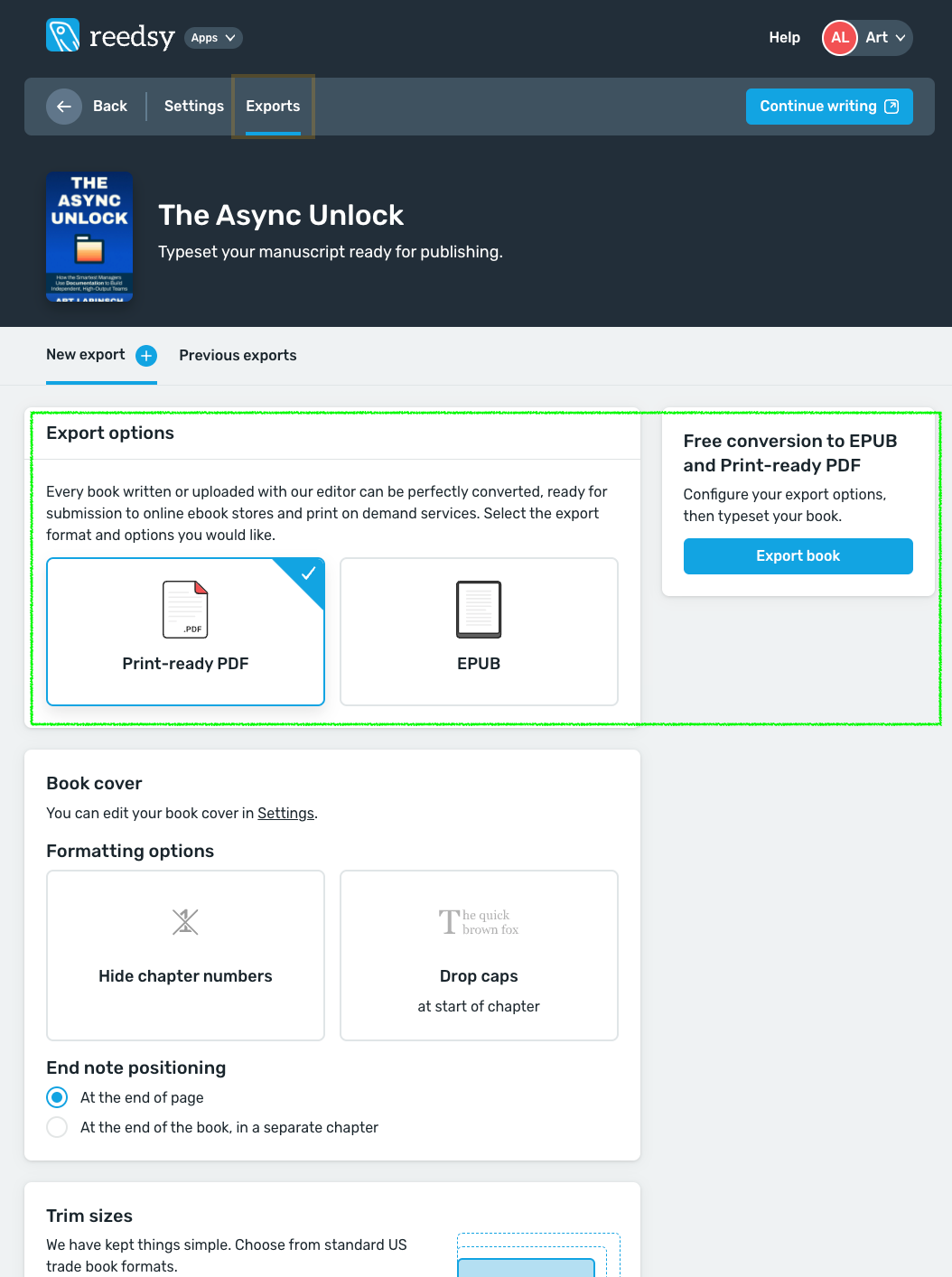
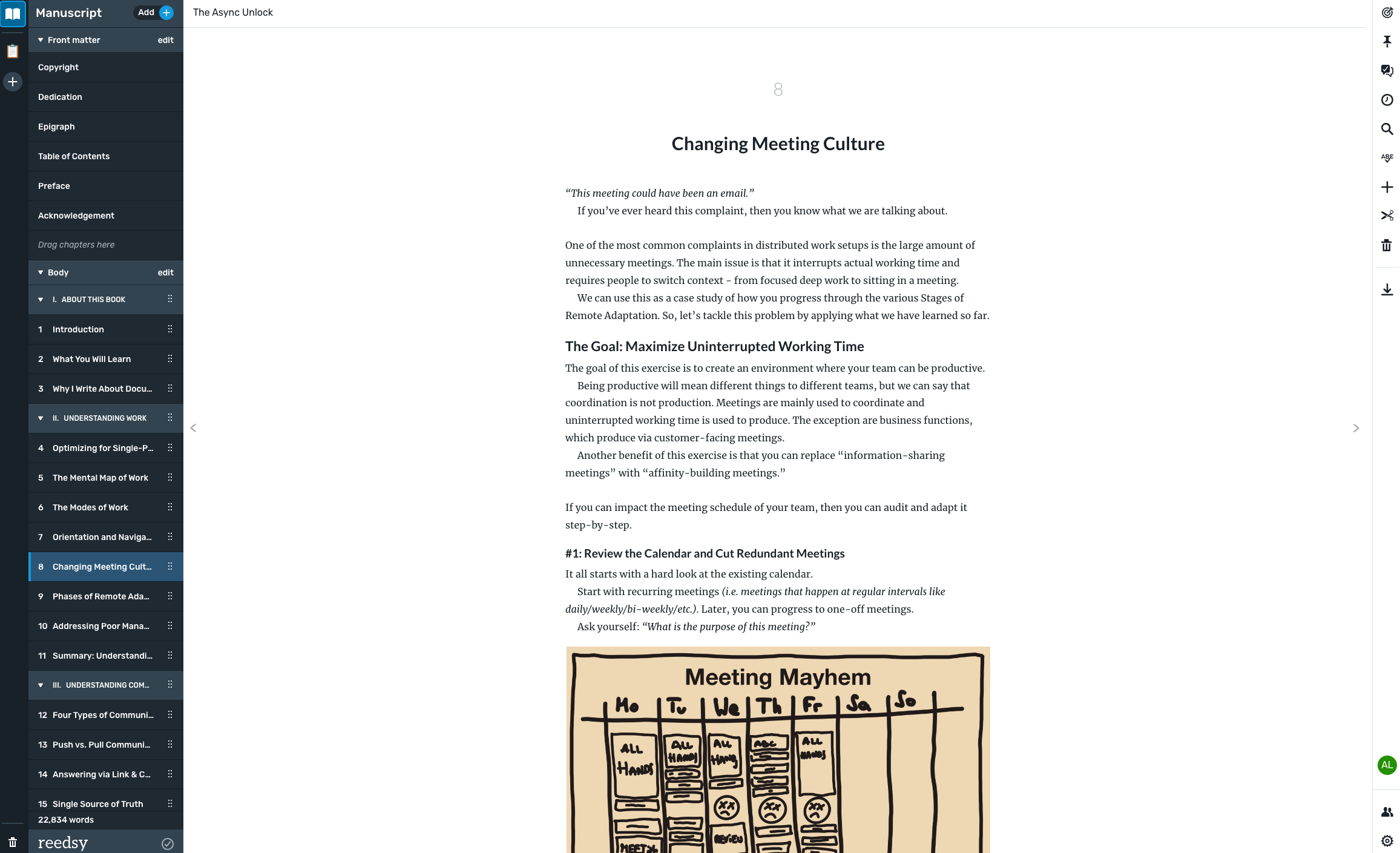
1. Dynamic table of contents; 2. Book settings page; 3. Me referencing my copy of "Write Useful Books"; 4. Export section; 5. Chapter edit view.
Maybe there are better tools but I don't know, since I haven't tested them. Reedsy was good enough for me.
Outlining in Google Sheets
After I set up Reedsy, I did the following:
- Copy/paste all the content from my old manuscript into Reedsy
- Create separate chapters and copy/paste the relevant content into the chapters
- Create parts and move the chapters around
At some point, I got lost in the details and felt that I have no idea how it would flow from a reader perspective.
I stepped away from Reedsy and opened a Google Sheet to answer a few questions:
- Which ideas do I want to communicate? → These would become the chapters
- What information/data supports these ideas? → These are the stories/examples in the chapters
- Why should the reader learn about it? → Answering the "so what?" question
- How should the information flow start to finish? → This is the progression of parts and chapters that makes sense.
Here's what v1 of what this exercise looked like 👇
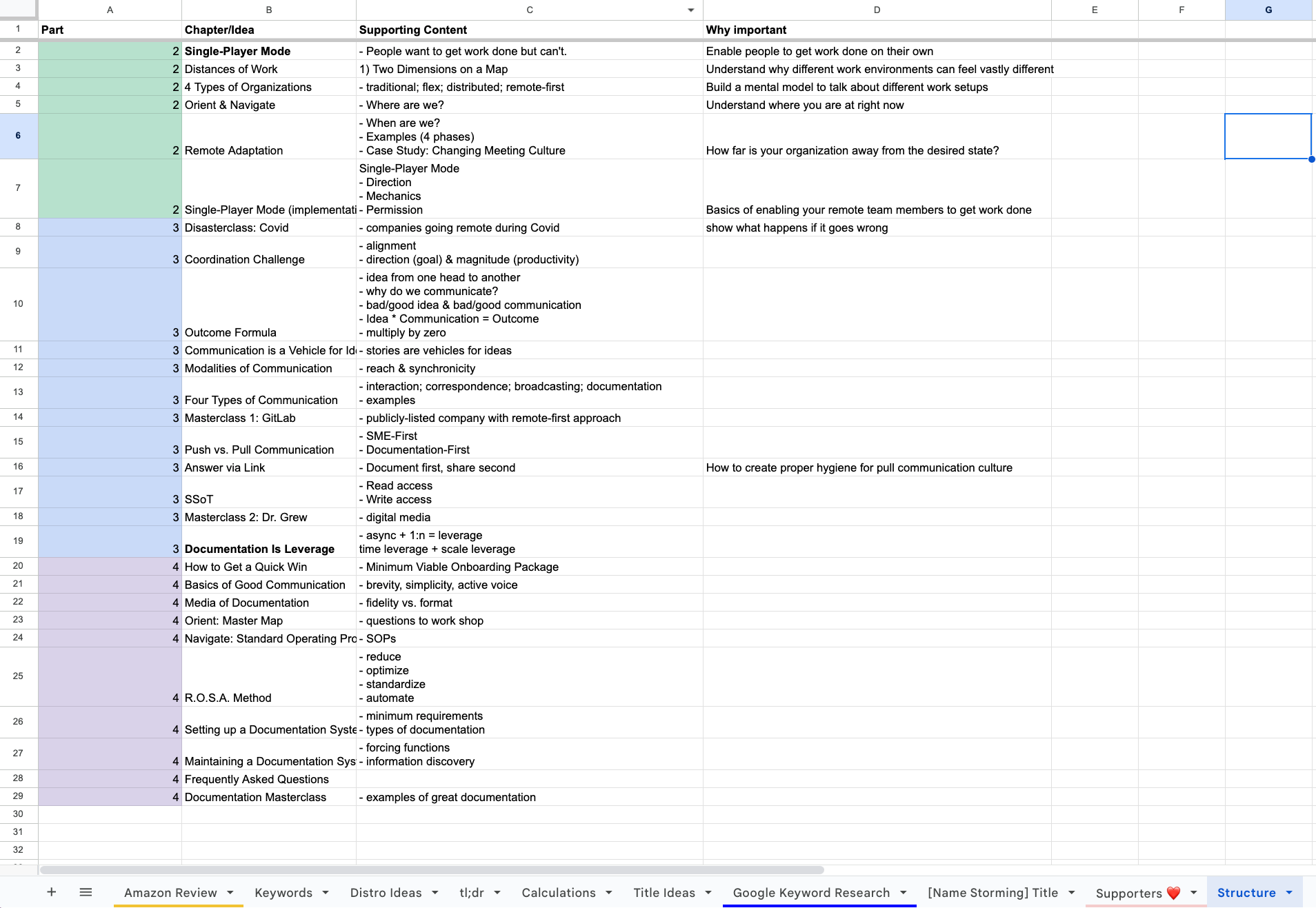
After coming up with the first version of this, I would read it out loud. This helped me figure out if it was rubbish or actually made sense. If it didn't, I would go back and re-arrange. Rinse and repeat until you have something that is good enough.
Don't worry, there will be enough changes made once you start writing. The goal of this step is to create an acceptable outline to get you started.
Forcing Myself to Write with the Stallone Method
Writing is one of the hardest creative endeavors. Writing a blog post is hard. Writing an entire book is infinitely harder.
And believe me when I say that the human mind is a super computer made to find any excuses to postpone writing.

Luckily, around that time, I listened to an episode of the My First Million podcast where the hosts discussed Sylvester Stallone's routine when writing the script for Rocky.
Legend has it that he wanted to get the script done in a weekend. He locked himself in a room, painted the windows black, and got to it.
“Yeah I did paint them black because I didn’t want to know what time it is, it didn’t matter what time it was.” - Sylvester Stallone
So I decided doing exactly the same.
After waking up, I would grab coffee, go into my writing room, pull down the blackout curtains, and start writing until my creative juices would run out. Usually, this would be an early session from 10am -1 pm and then another session from 3pm until 7pm.
This method worked for me. I knew that I need 30-60 minutes of writing to get into the zone. Ideally, I have 2-3 uninterrupted hours of work. This entire step took roughly two weeks of work: One week of dilly dally and another week of writing in a dark room.
Whatever you do, just try to figure out how to get the most out of your own creative state.
Illustrating by Hand
All the frameworks in the book are explained with illustrations.
Back in the email-based course days, I illustrated all of those in Figma. The style was a mix of business meets pixel art. I liked it back then but it wouldn't cut it for the eBook. Mainly because the details of the illustrations were too small and had too little contrast to be properly displayed on a small screen.
Ergo, I had to re-do them. This time, I decided to draw them by hand on an iPad app called Procreate. The new collection of illustrations looks like this 👇
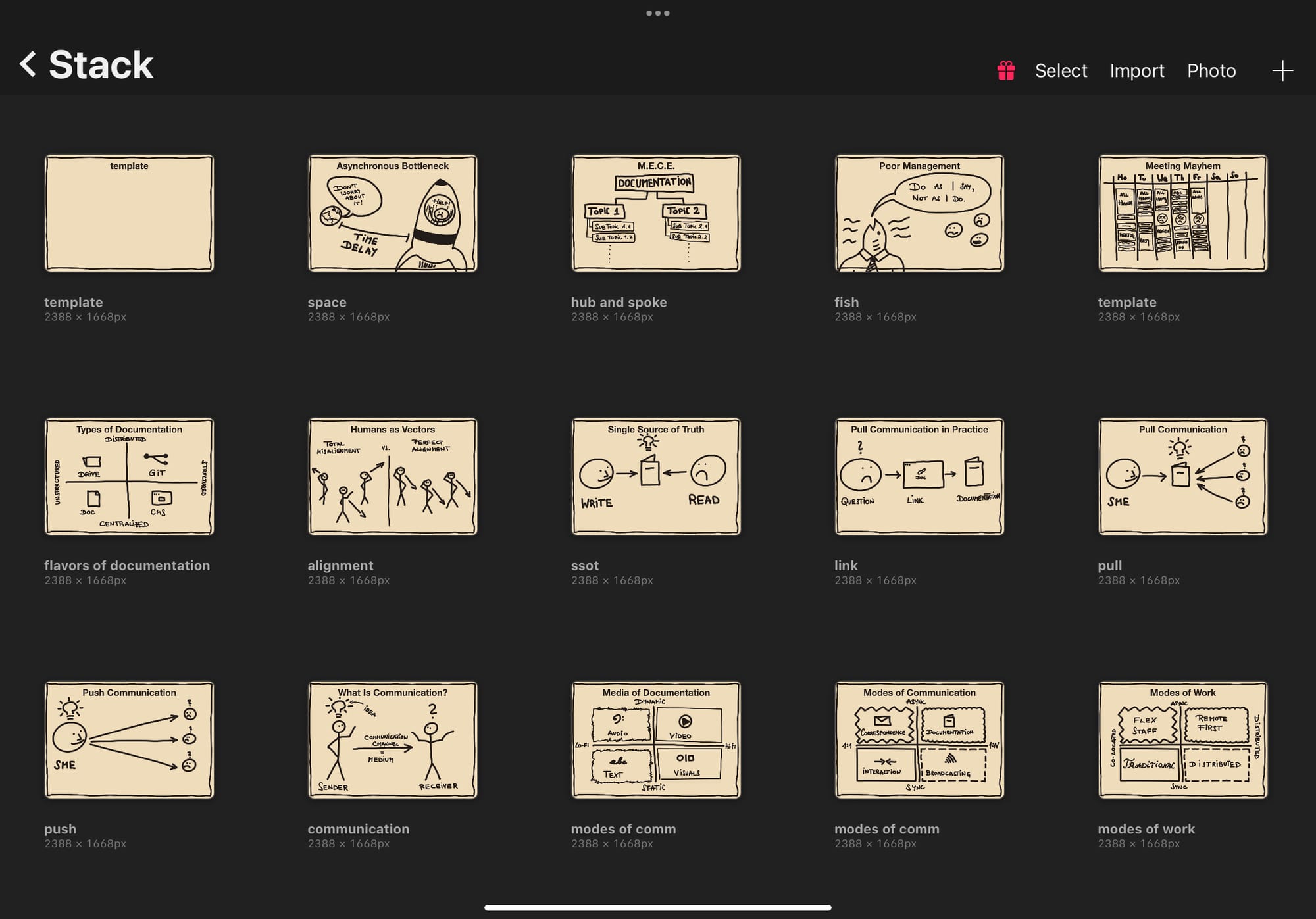
Then, it was time to edit the living Christ out of the manuscript.
Editing
I had five rounds of edits with different objectives.
The edit rounds moved from big picture (does this part/chapter make sense?) to detail-level (does this sentence/word make sense?)
Edit #1 (Myself): Fixing the Flow
In the first run-though, I exported the entire thing and read it cover to cover.
Questions I asked myself along the way:
- Does this stuff make sense?
- Does it make sense in this particular order?
- What's missing?
- What's redundant?
This helped me re-arrange the chapters a little bit. I would cut some chapters entirely. Other chapters would be split into separate chapters for more focus.
Edit #2 (Myself): Improving the Reading Experience
In the second edit, I tried to do everything and anything to make it easy on the reader:
- Front-load the value → Start with the most important takeaway instead of focusing on boring theory.
- Simplify the language → Make it as easy for the brain to process the information.
A very helpful tool for this was the free Hemingway App. To show you how it works, I copy/pasted the paragraphs about Sylvester Stallone's routine into the Hemingway App 👇

The guidance I've heard from other writers is to aim for a readability score between Grades 6 - 8. New York Times scores around Grade 7.
This step shows you what's difficult to read. If you have someone else (i.e. editor) read through your writing, I strongly recommend doing this review before lobbing the draft over to someone else.
Not only will they thank you but they will also have more mental capacity to focus on the big picture (i.e. ideas; examples; stories; flow; writing mechanics; flow) instead of fixing spelling errors and confusing paragraphs.
Edit #3 (Myself): Examples
Readers remember more easily when there are concrete examples.
Remember Sylvester Stallone? Yup! That's what I mean.
Therefore, my third edit round was aimed at adding examples, case studies, and a bit of humor.
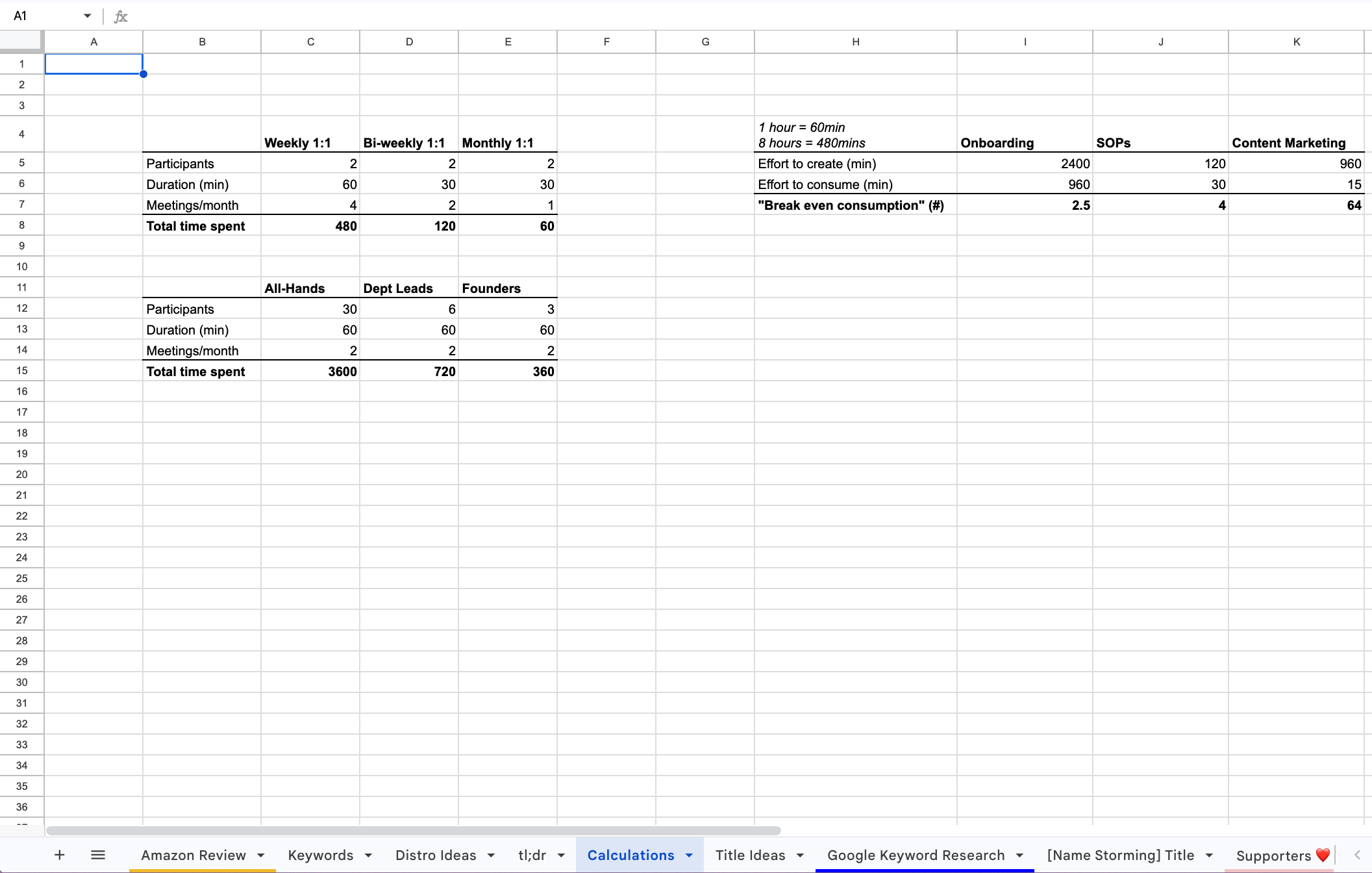
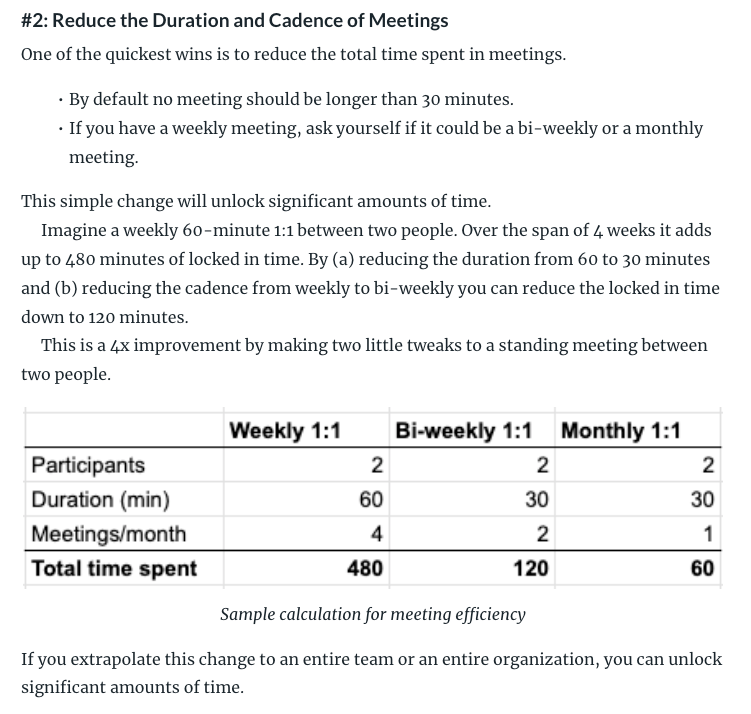
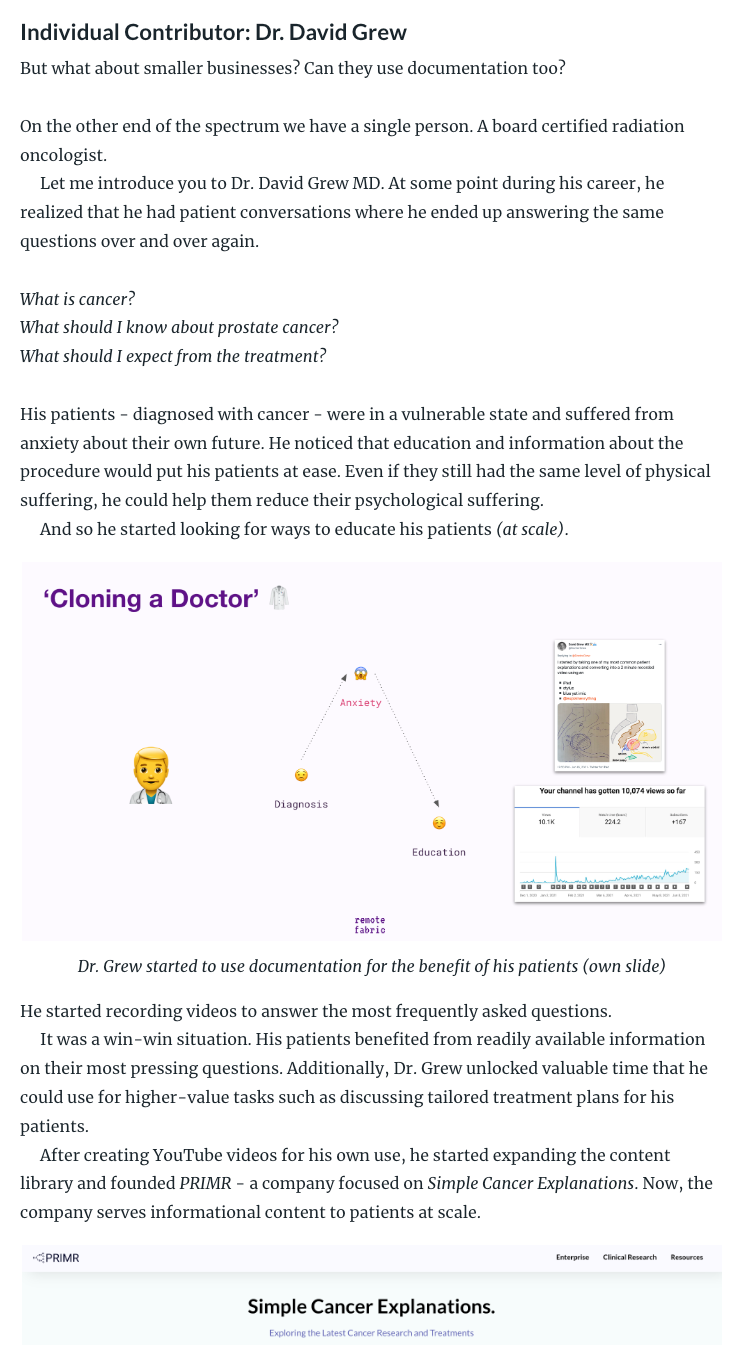
1. Sample calculations made in GSheets; 2. Sample calculations as part of the reading experience; 3. Dr. Grew case study to showcase a best-practice for individual contributors
Just like in this blog post, I could write about it or I could show you. A picture is really worth a thousand words.
Edit #4 (Sara): In-Depth Edit
Finally, I gave myself an artificial deadline to present the finished product to my wife. She's an English native speaker, worked in managerial positions (i.e. my target audience), and calls me out on my bullsh*t. Perfect editor in my book.
I gave her the exported pdf version on an iPad and asked her to answer these questions:
- What's unclear or confusing? → Rephrase or cut
- What's redundant? → Cut
- What is missing? → Add
- Where does it start to get boring? → Rephrase or shorten
- What is good? → Expand and double down
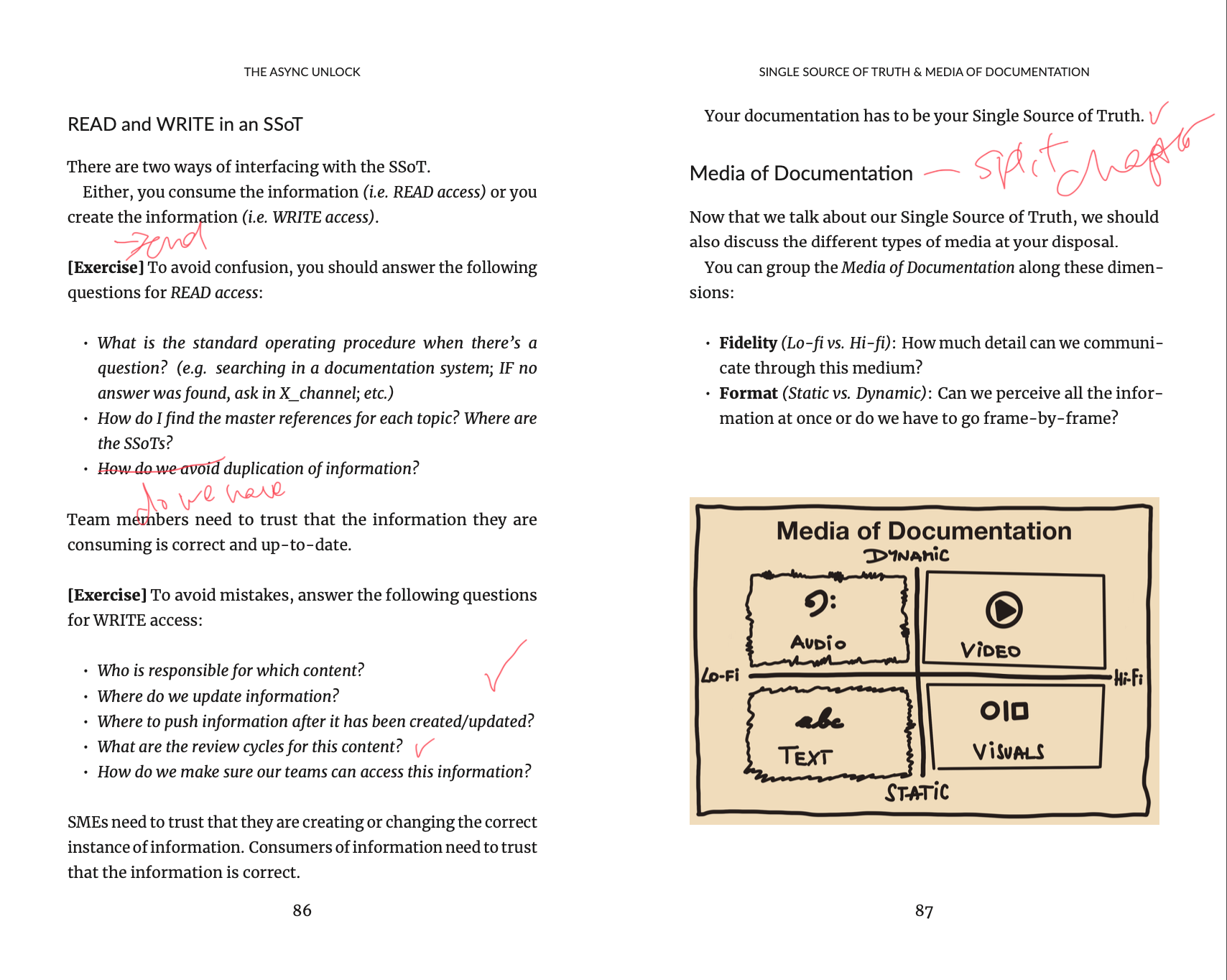
I would say that this is definitely the one stage where a complete rework of the book is in the cards. If your editor doesn't know what any of this means, then (a) you have produced a train wreck of a draft or (b) picked the wrong editor.
Luckily, she was able to read through it while highlighting some areas of improvement. We took an hour to go through her feedback page by page so that I would know what her thinking was.
I took notes on a chapter-by-chapter basis so it would give me a "task list" to work through from start to finish.

I understand now why authors thank their editors. This particular step helped me tighten the book and make it significantly better. A few examples:
- Less Clutter: It helped cut out redundant ideas, chapters, and examples. Only the good stuff remained.
- Standardized Language: My choice of words was all over the place.
It included everything from overly professional language to super colloquial lingo, dawg! - A Chapter per Idea: I had a few chapters where I would mingle different ideas. After her feedback, each idea got its own home.
- Exercises at the End of Each Chapter: From a reader perspective, Sara enjoyed the exercise questions that were included in some chapters. We decided to put exercises at the end of every chapter. This felt more consistent but also more useful for the reader. The book includes 112 guiding questions now.
I added Sara to the credits of the book because it really made a big difference.
Edit #5 (Philipp): Sanity Check
After implementing all the feedback, I gave it to my friend Philipp. He read through the quasi-finished book on his Kindle.
A few small comments here and there. But overall, this was a sanity check and the book had luckily passed ✅
Cover Design
Next on the agenda was the design of the book cover.
Oh, boy. There are many different opinions out there. What's important? What's not? Who knows?
The best way I can synthesize the 80/20 for Kindle eBook covers is this:
- Capture Attention: Your book cover has to stand out amongst the other options on the product results page. Ideally, the cover has a background that is not white like the background of the product results page. Color and typography are your friends when trying to make it "pop."
- Contain Title and Subtitle: A typical Kindle eBook cover contains the title and the subtitle. The length of the words has an impact on the largest possible font size.
- Optimize for Thumbnail Size: Other than in a book store, the potential buyer is searching for the product on their computer or on their mobile phone. The size of the cover is tiny. Now, think how long words in the title require small font sizes. This can dictate which title to choose.
My first designs were a total mess. Bad composition. Hard-to-read text. Titles that were too long and would require small fonts. Nothing worked.
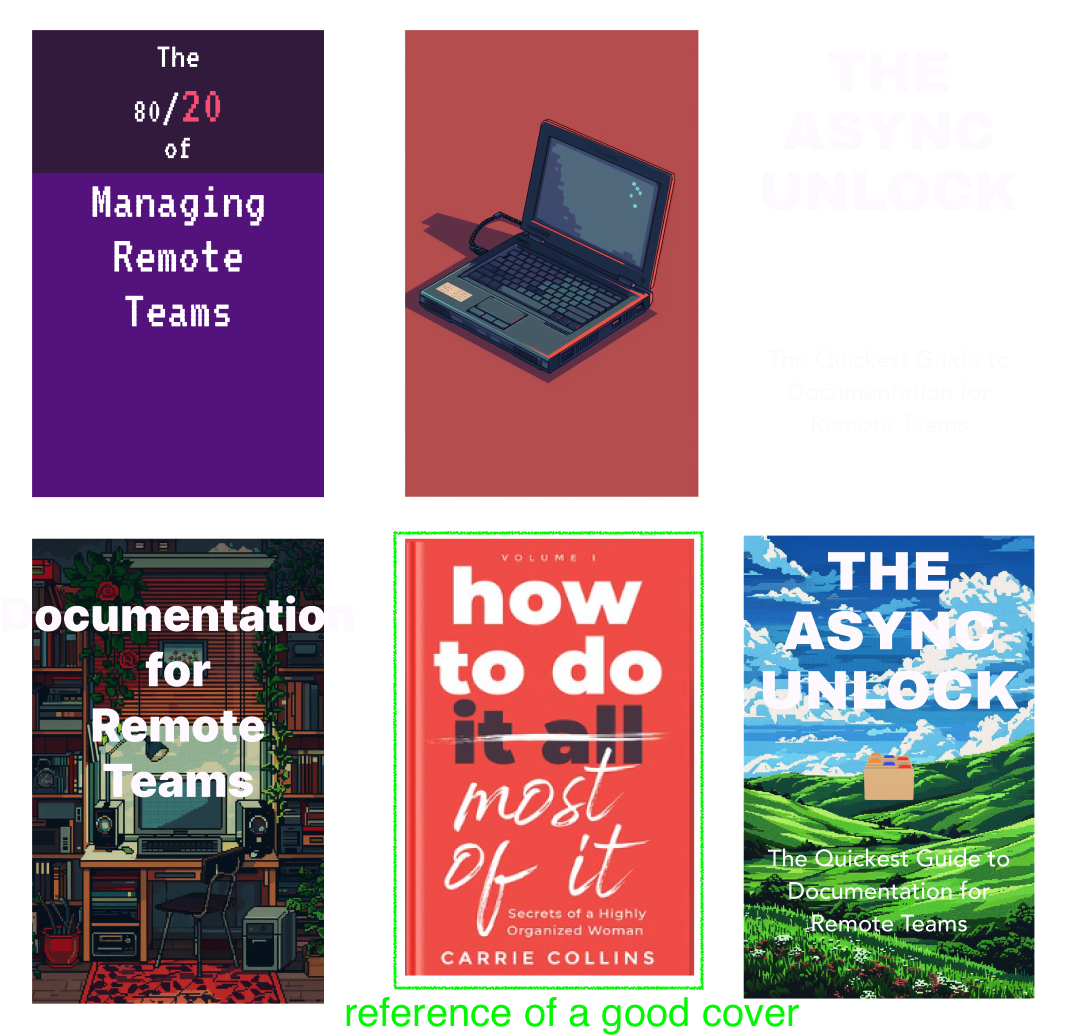
I consulted my friend Felix and we brainstormed a few ideas. After a while, I had the idea to combine the famous Windows background with the green hills with a simplified folder icon that would represent Documentation. A couple of prompt engineering sessions in Midjourney and DALL-E later, I had a few designs that I liked.
Additionally, I decided to shorten the title of the book to The Async Unlock because the short words would allow for a larger font.
The next iterations were already much better but not perfect yet. Some people said that certain covers would be too hard to read but then others would be too boring. A lot of experimentation followed and these were the final options I requested feedback on👇
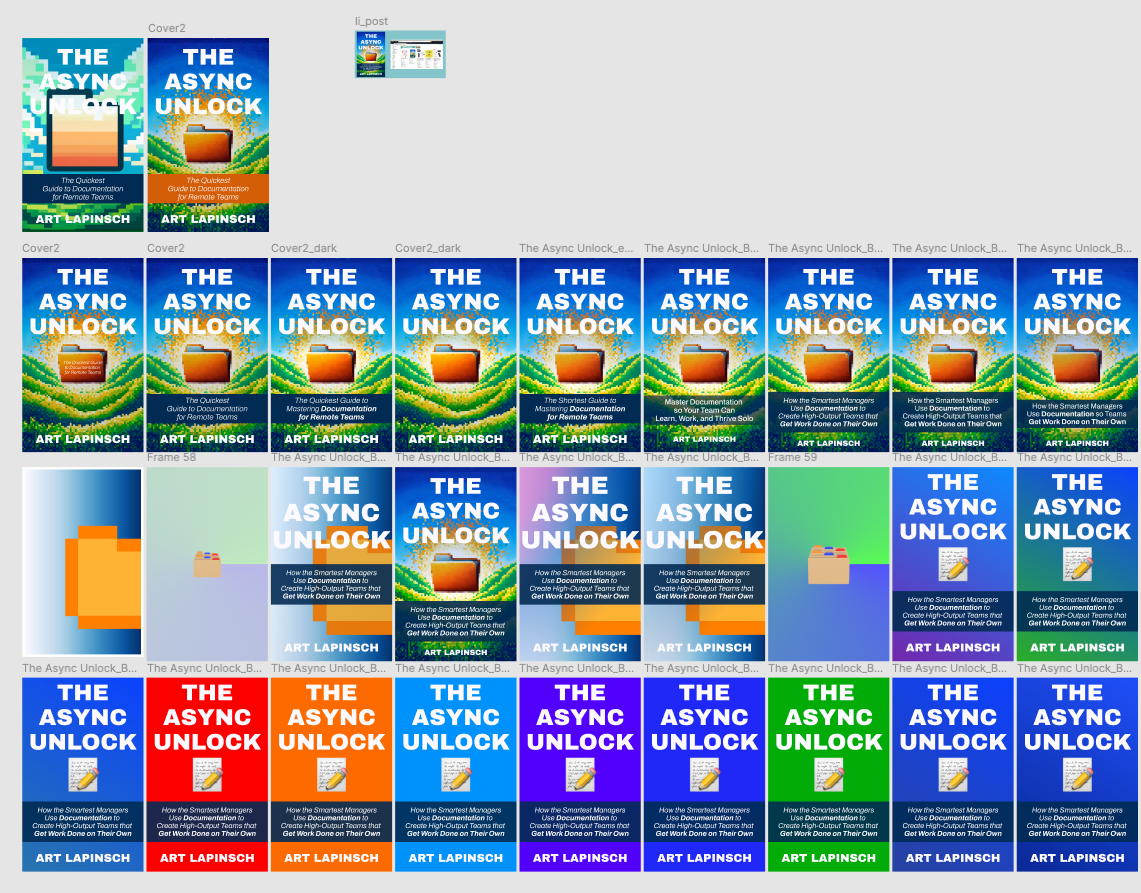
After the public feedback request, I decided to go with an AI-generated design from the second row. But...
I noticed something during the upload procedure before publishing the book. The Amazon KDP (Kindle Direct Publishing) platform asks the author if any of the content (text and/or images) was AI generated. And immediately, I started thinking:
- Do I even have the rights to commercially use the generated output?
- What if Amazon changes their Terms and Conditions (T&Cs) and bans books with any AI-generated elements?
- What if the generative AI tools change their T&Cs and ban usage of the generated output?
I decided it wasn't worth the risk. Instead, I created a simple cover in Figma:
- Blue gradient background
- Rightly-sized and -colored fonts
- A simplified folder icon made of many colored squares (25 x 25px) with some rounded edges
Et voila 🪄
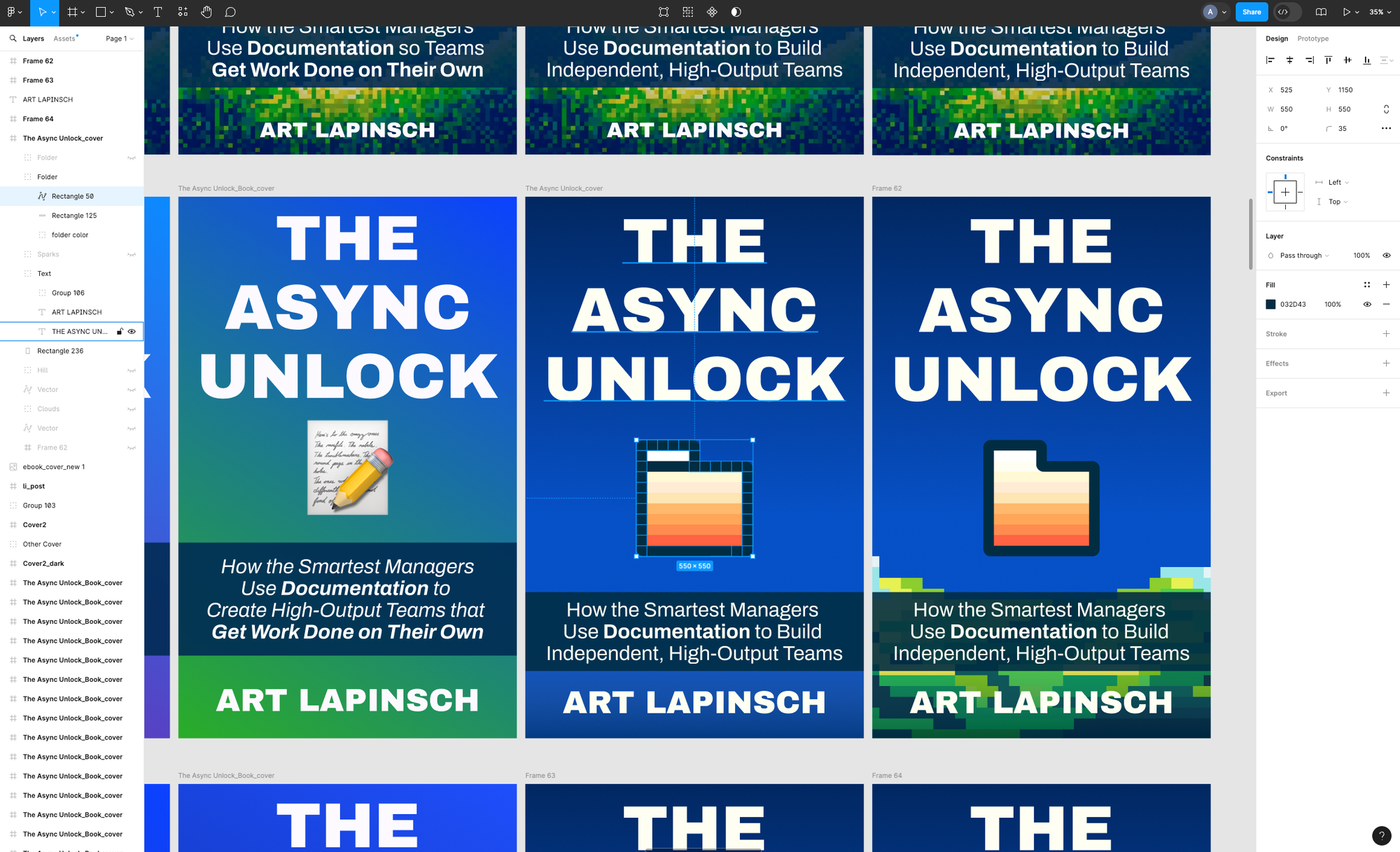
Luckily, I've honed my Figma skills over the years. Came in handy at the right time. Most of what I know has been learned from my buddy Nate.
Title & Subtitle
Now, the Title and Subtitle combo is important.
Finding the Title
Let's talk about the Title first. It dictates for which keyword searches my book will show up.
Also, there's a big difference of me saying:
"Hi, I'm Art, the author of The Async Unlock"
or
"Hi, I'm Art, the author of The Quickest Guide to Leverage Documentation for Remote Teams."
One doesn't quite roll off the tongue like the other. Don't you think?
Additionally, it has a huge impact on how large the font can get on the book cover.
To get a feeling for the conventions of the business/management book genre, I created a GSheet with the following columns:
- Name: Combination of Title and Subtitle so I have a quick reference
- Cover: Visual reference to color and readability at thumbnail size
- URL: For quick navigation when researching the book
- Published: To understand how long this book has been in the market → important to put review count into perspective
- Reviews: Number of reviews
- Avg. Rating: The average reader rating on Amazon
- Description: The book description that you find on the product page
- Kindle Price: For reference when deciding my own price
- Print Length: This was primarily for my own sanity. I had the feeling that my book was on the shorter side but compared to other books in this genre, I have written a decently-sized book.
After the initial competitor research, I placed my own book smack middle in row #8 so I would have a quick visual reference to compare.
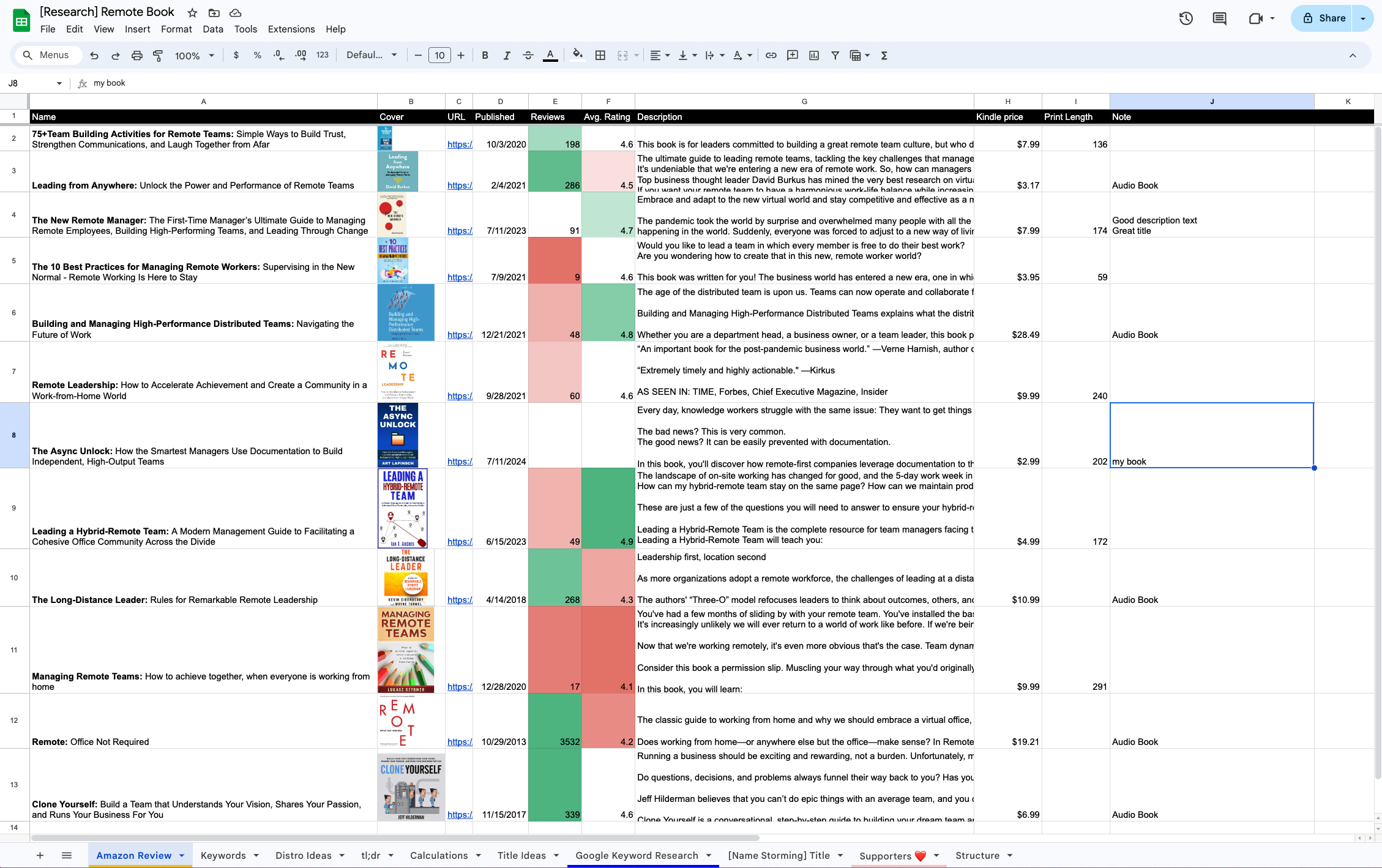
My title research had a bunch of variations:
- Document
- Handbook Manifesto
- Documentation for Remote Teams
- The 80/20 of Managing Remote Teams
- Unlock Remote
- Remote Unlock
- The Async Unlock
I ultimately landed on The Async Unlock for three reasons.
First, the words in the title are so short that I could blow the font up in size. The thumbnail image of the cover is much easier to read and hopefully sets my book apart from other competing covers.
Second, I like how it rolls off the tongue. Five syllables. 1-2-2. Up, down. I like it.
Third, and most importantly, it's a coined phrase. This is an idea from writing instructor David Perell:
COINED PHRASES
When you distill an essay down into a simple word or phrase, you not only create a memorable title for your work, but you make a contribution to the English language. Think about phrases like “FOMO” (fear of missing out), “doom scrolling,” or “the meat sweats.”
Coined phrases are more than just short and insightful. They’re catchy. They’re earworms. They’re fun to say out loud, and once you hear one, you can’t help but repeat them while talking to friends. When your essays can be compressed down into lingual memes, you open yourself up to free viral marketing.
Coined phrases often hold these characteristics:
> Surprising – They surprise us in the moment, but feel obvious in retrospect. Once we see them, we can’t unsee them.
> Ambiguous – They create suspense and spark the reader’s curiosity.
> Visual – Good metaphors activate the reader’s senses and are as vivid as they are true.
> Fun – Like a jingle, you can’t help but say them out-loud.
I don't think that The Async Unlock is just as catchy as The Meat Sweats. But, I came up with the term and this means that I can fill this term with meaning. It doesn't carry any pre-existing symbolic baggage.
I didn't write the first book on management via documentation. But I wrote the first book about The Async Unlock - how managers use documentation to enable their teams to get work done on their own.
In marketing terms I would say this follows Al Ries' Law of Category: If you can’t be first in a category, set up a new category you can be first in.
Workshopping the Subtitle
Whereas the title has to be short and snappy, the subtitle can be quite long. A subtitle expands on the promise of the title through more specificity.
I was stuck. All my ideas fell flat. And so I had to try something different. Luckily, I remembered about a creativity technique for writers called copywork. It works by copying proven/successful copy by hand. Line by line. It takes effort but (a) you learn how good copy flows and (b) you start to see patterns that you can re-create yourself. Your brain is primed and you'll have a better chance of coming up with something catchy yourself.
Good ad copy has three pillars:
- Value: What are you promising ("7-step formula")
- Benefit: How is it going to benefit the reader ("write ad copy 100 times more potent...")
- Embellishment: How do you amplify the message with expressive words ("even an illiterate drop-out")
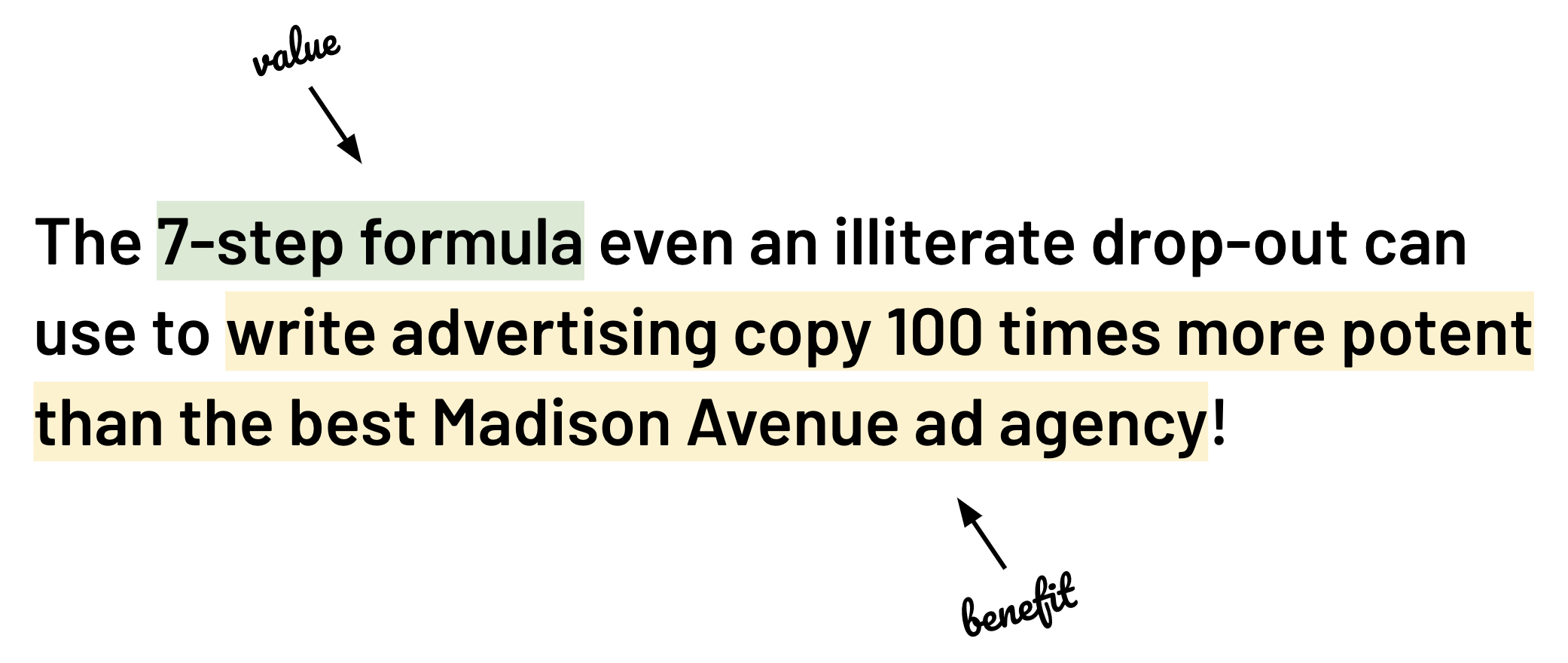
Everything I learned about copywork is from this free course - it's just a list of good ad copy examples that you have to write out by hand.
Next, I turned to my friend ChatGPT. I asked it to "give me a list of the 30 best-selling non-fiction business books on Amazon. Give me the title and subtitle."
Then, I (a) copied each title and subtitle combination by hand and (b) highlighted the value and benefit elements of that copy.

My favorite example was this "The Lean Startup: How Today's Entrepreneurs Use Continuous Innovation to Create Radically Successful Businesses."
It checked a lot of boxes:
- The Change: Today's entrepreneurs are doing things differently
- The Value: Use Continuous Innovation
- The Benefit: Create Radically Successful Businesses
And so I went back to my notebook to write multiple iterations of my own subtitle.
Eventually, I arrived at this: "The Async Unlock: How the Smartest Managers Use Documentation to Build Independent, High-Output Teams."
I believe it works along similar lines as my reference subtitle:
- The
ChangeSecret: What do the smartest managers know that the rest doesn't? - The Value: Use Documentation
- The Benefit: Build Independent, High-Output Teams
I was happy and could move on.
Product Detail Page
From all my reading, I learned that there are only a few things that a potential Kindle eBook buyer evaluates when searching for a product:
- Cover: Does it capture my attention?
- Title & Subtitle: Does it capture my interest?
- Ratings: Have others liked this product? Does it seem trustworthy?
- Price: Does the price seem fair?
For example, let's assume I'm interested in buying a book about climate. I would go on amazon and type "climate book." The first page I see is the Amazon search results where it shows products that fit my keywords. My eyes screen the page and go through the various elements (cover → title & subtitle → ratings → price). If all of those check my boxes, then I click on the product and it leads me to the Product Detail Page.
This is a sample flow based on the first results Amazon showed me 👇
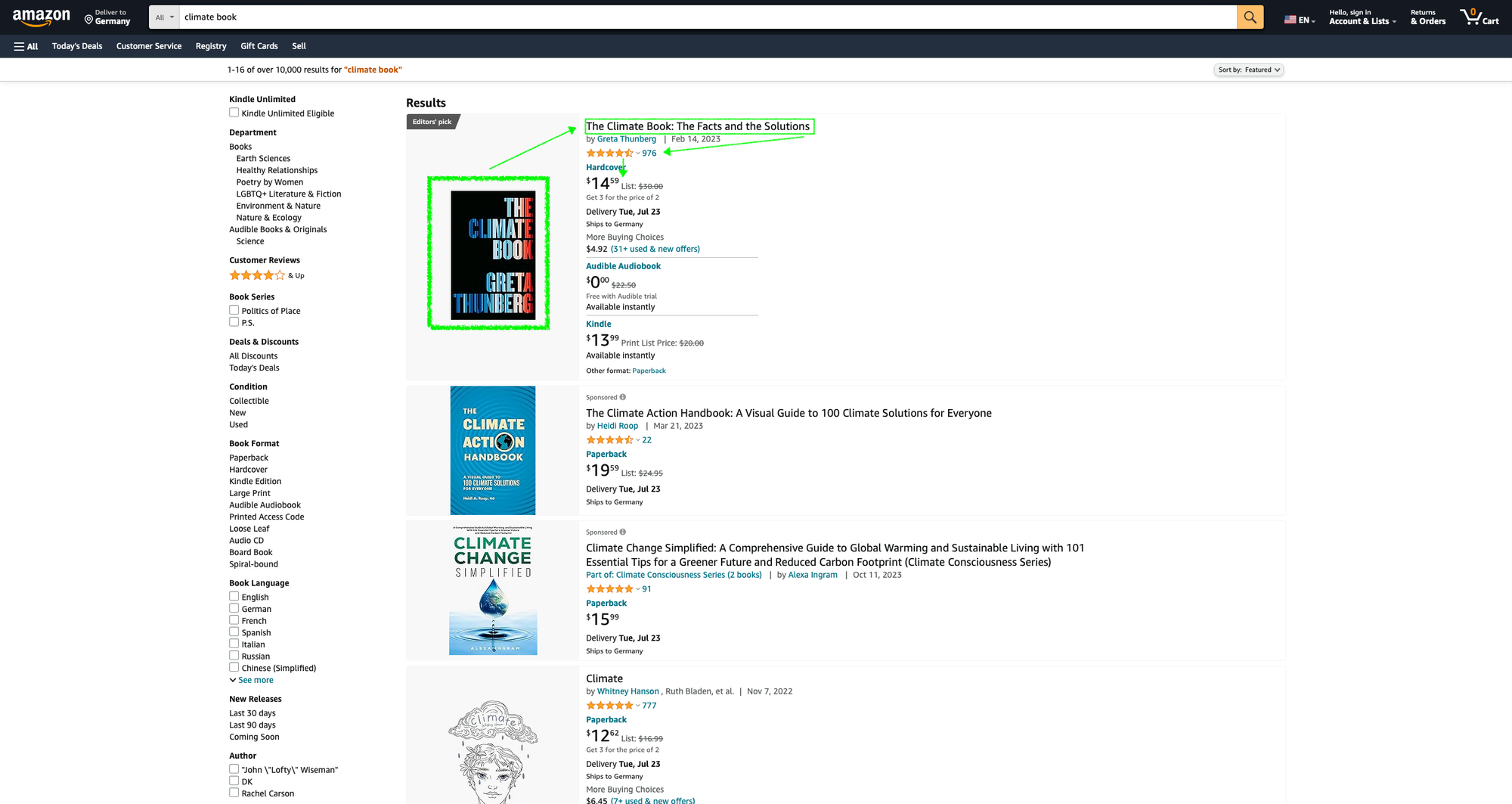
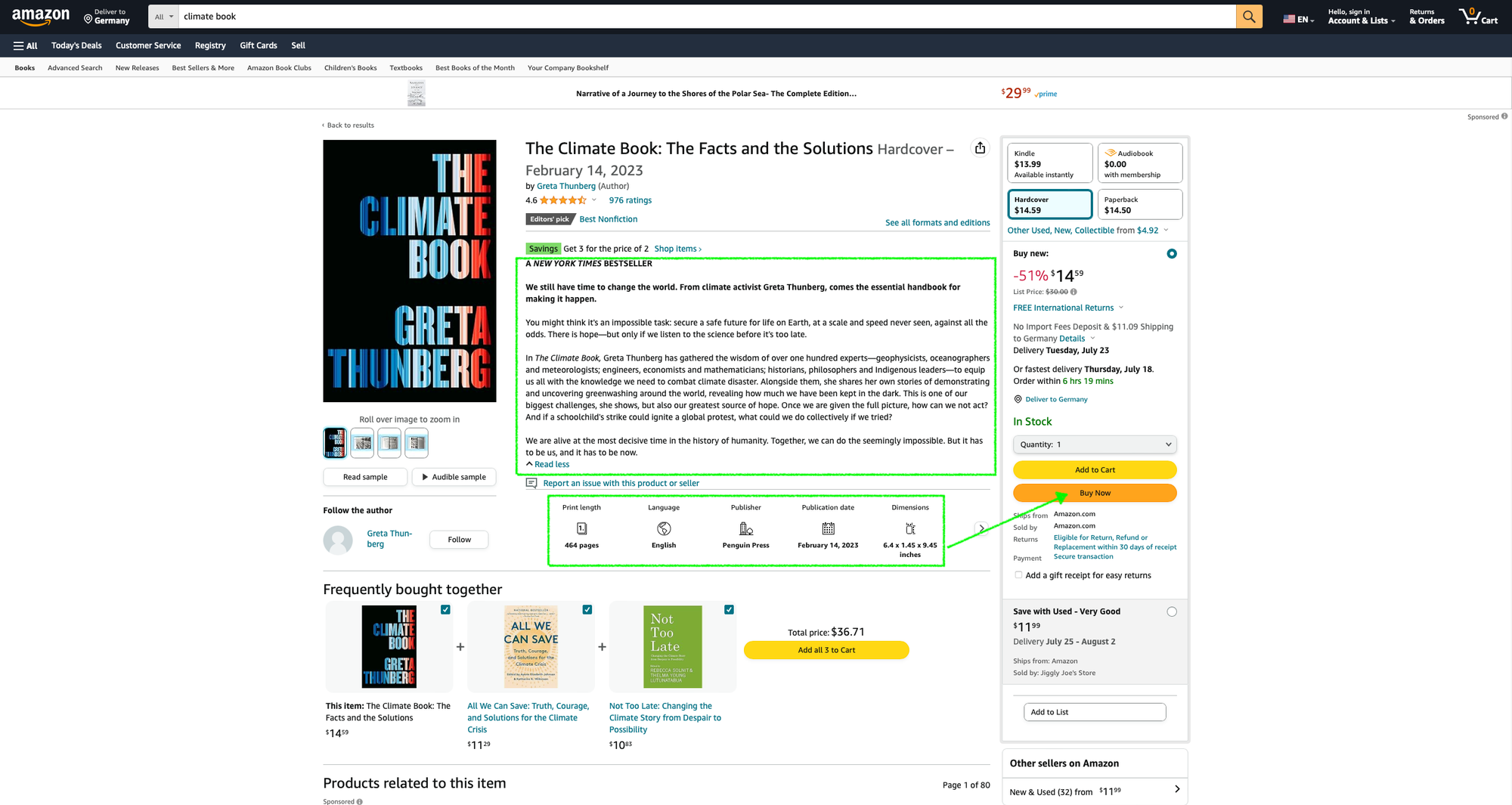
1. Amazon Search Results where the shopper screens the various elements; 2. Product Detail Page that can trigger the purchase
If the Product Detail Page checks out, I'm more likely to buy.
So, the goal of this page is to convince the potential buyer that this product is actually what they are looking for.
A very important point:
- I want readers who have a specific problem that my book solves: My product detail page caters to a very narrow audience. Ideally, this description attracts my target market and sets the right expectations.
- I don't want to set false expectations: My product detail page states what this book is and what this book isn't. I want to avoid people who buy the book with the wrong expectations and then give me a bad review. This would be bad in the long-run.
With this in mind, I had a look at various product detail pages that were (a) well-written and (b) optimized in terms of structure and formatting. I copied them into a GDoc, read through them, and highlighted/noted whatever caught my attention - positively or negatively. Then, I wrote my own description.
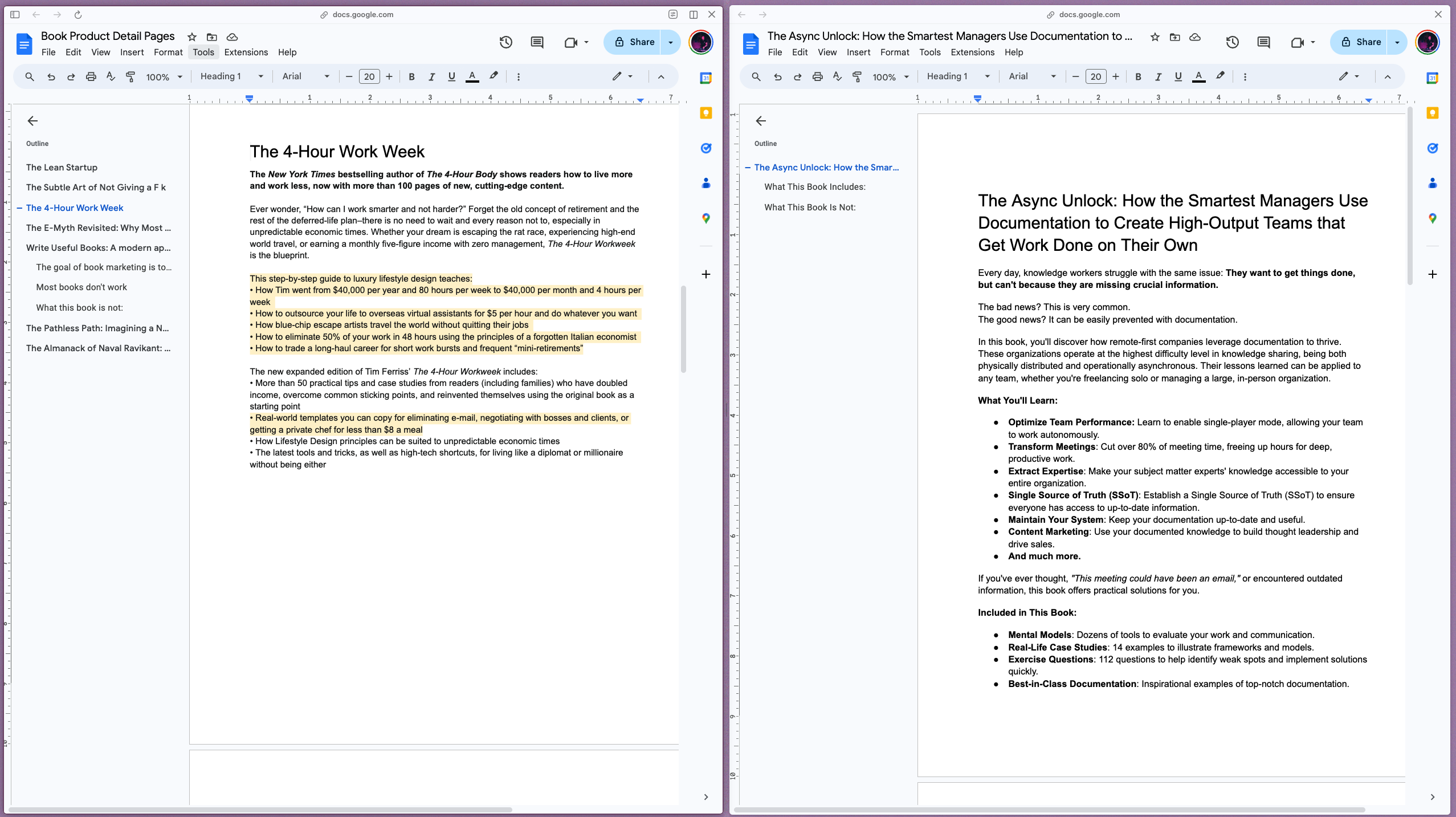
Check ✅
Testing
Before uploading the book on Amazon's KDP platform, I would export the book and review it on my Kindle.
After exporting a file into .epub you can easily send the file via email to your Kindle email address. It takes a minute or two and then your file shows up in your library.
I have to say it was quite surreal seeing my book on an e-reader for the first time. It suddenly felt so legit.
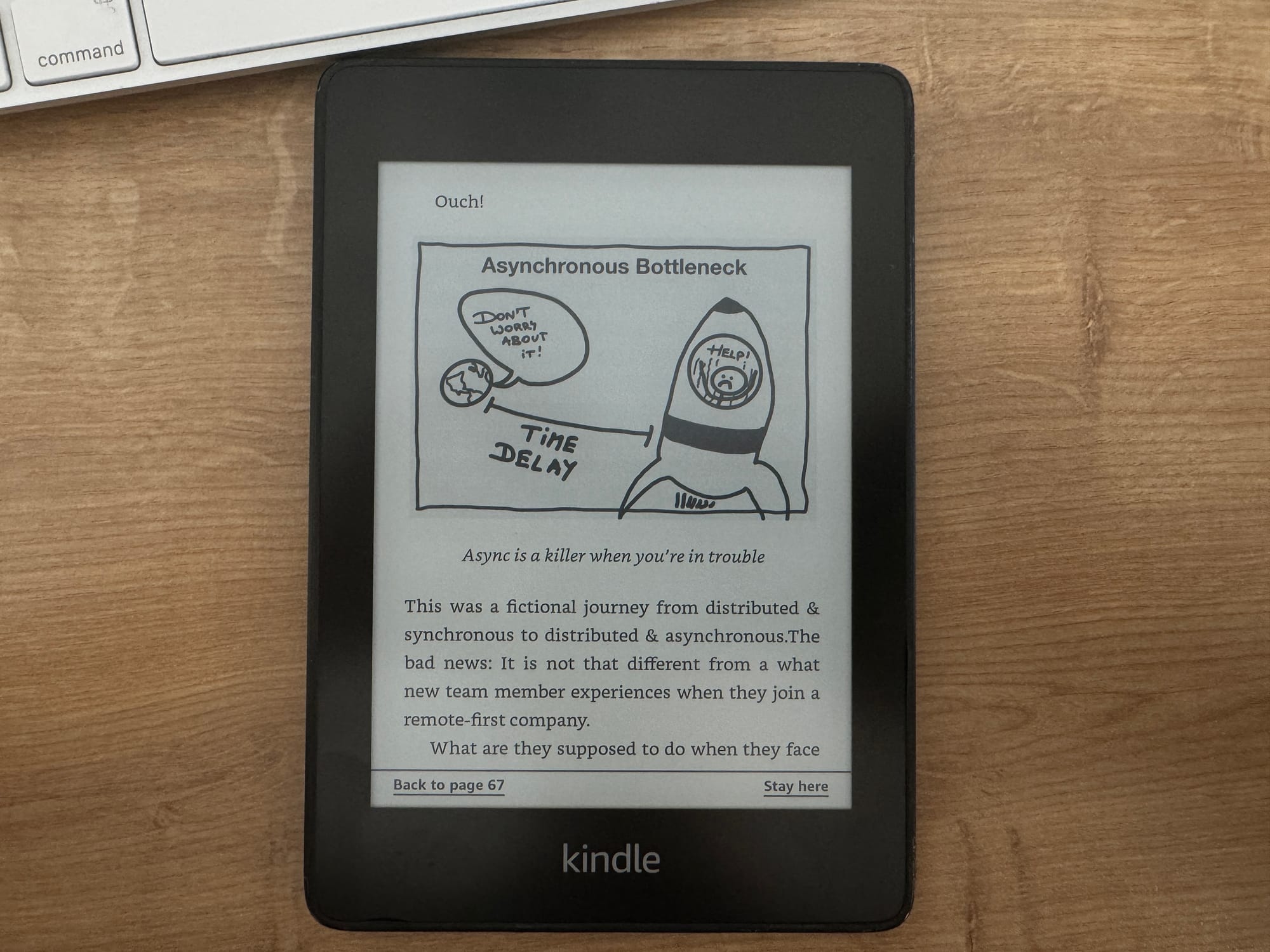
This step helps catch formatting mistakes (as the one in the picture) and gives you a chance to look at the product through the consumer's eyes.
What if you don't have a Kindle e-reader? No problem. You can download the Kindle app for iOS, Android, or your favorite computer operating system.
Pricing, Keywords & Categories, and Publishing
At last, when your book, your cover, your titles, subtitles, and descriptions are ready, it's time to finally publish your book.
To publish it, you need to make a few final decisions.
Pricing
Amazon Kindle books are usually priced between $2.99 - $9.99
Why? Because Amazon gives 70% royalties only for eBooks priced in that range. If your price is lower or higher, you can only receive 35% royalties. This is Amazon setting a clear incentive to publishers to keep eBooks in that price range.
My starting price is $2.99 because I'm following a simple strategy: Start with $2.99 and increase the price by $1 every week until you reach $9.99. // (This is the plan for now, let's see what the world will look like in the coming weeks.)
The logic is as follows: If a reader sees a book with a high price ($9.99) and low credibility (no/few reviews) then they will probably not buy. That's why it's recommended to start with a low price while building a review base and then start increasing the price over time. Gambling on a $2.99 book is more likely than on a $9.99 purchase.
Keywords & Categories
Amazon lets you select seven keywords to index your book. I used a chrome plugin called Keywords Everywhere, which shows me search volumes for a specific keyword. I learned the method from this Programmatic SEO course.

Eventually, I had a list of seven keywords that combined broad/high-volume search terms and narrow/low-volume search terms.
Additionally, Amazon allows you to select three categories where your book should be placed. That means if a potential buyer is browsing that category, your book might show up. There are roughly ~21,000 categories, so it gets quite messy.
This article gives a good overview of what you can do, but honestly, I just selected the three most relevant-sounding categories in the Business & Management umbrella category.
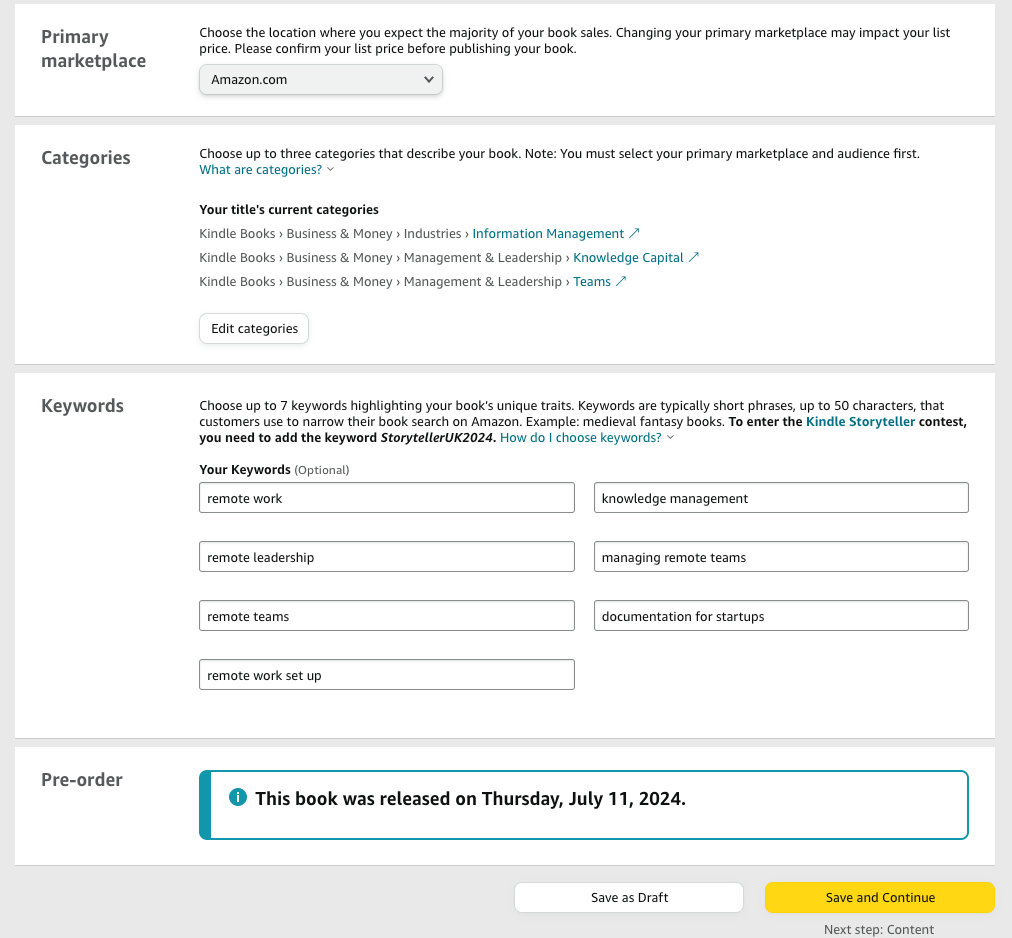
Publishing
It's prime time. Ready for publishing.
I followed this article to go through all the steps. After entering all the info, uploading the manuscript and cover, uploading the description, and selecting the price, you submit your baby to the Amazonian review gods.
KDPs Timelines tell you that the review takes roughly 72 hours. In my case it was closer to 100 hours. After 80 hours, I pinged their support chat to see what's up. They looked into it and shortly after I received an email that review has started. I think this accelerated the review.
At last, you receive an email with the following headline 👇

Making the First Sale
Ok... I'll admit it. I just spent $2.99 to buy my own book effectively giving $1 to Amazon... but who cares. I made my first sale.
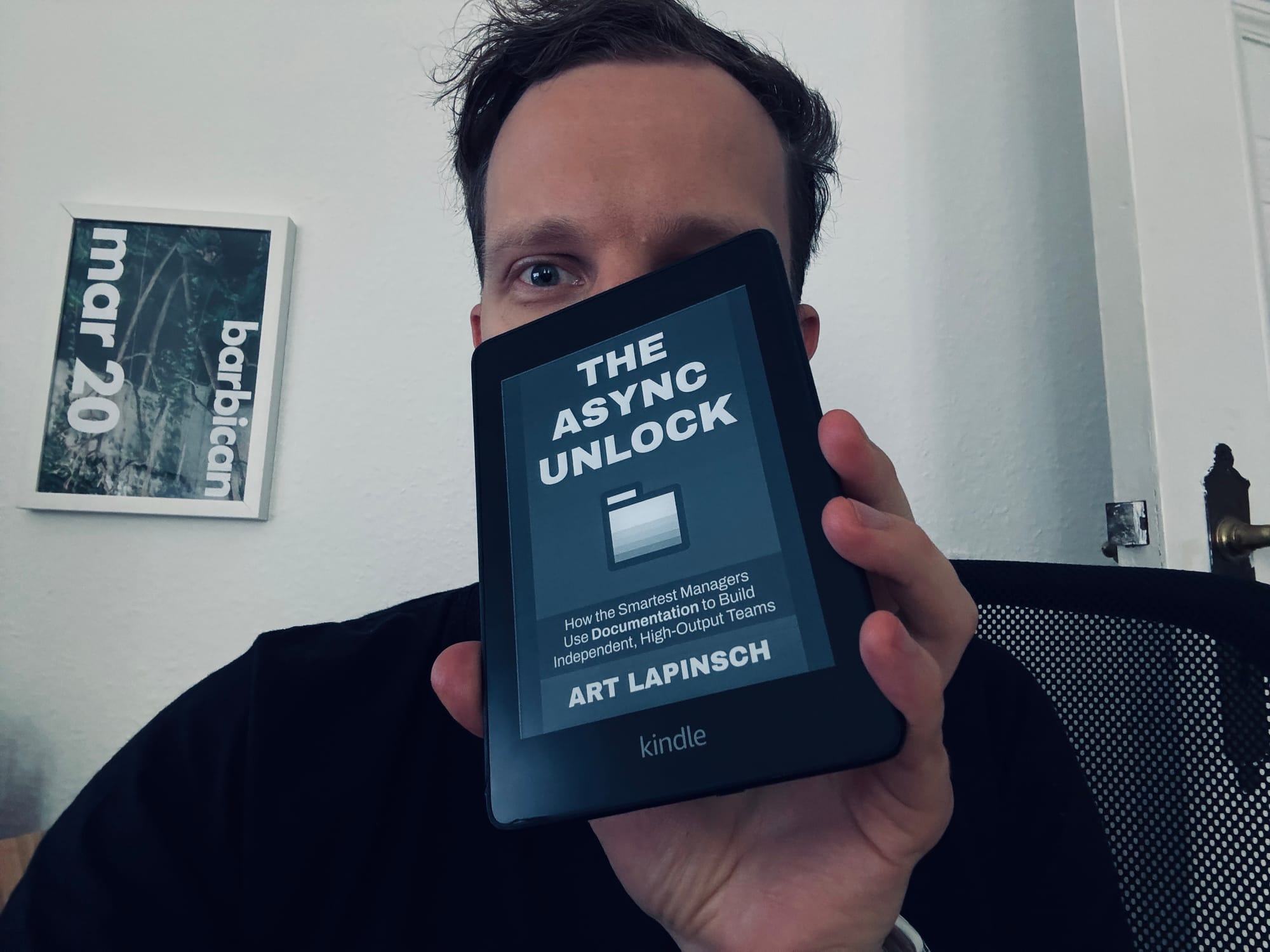
Onwards and upwards.
My FREE Self-Publishing Stack
As mentioned, one of my goals was to do this project without spending any money.
This is the must-have tech stack:
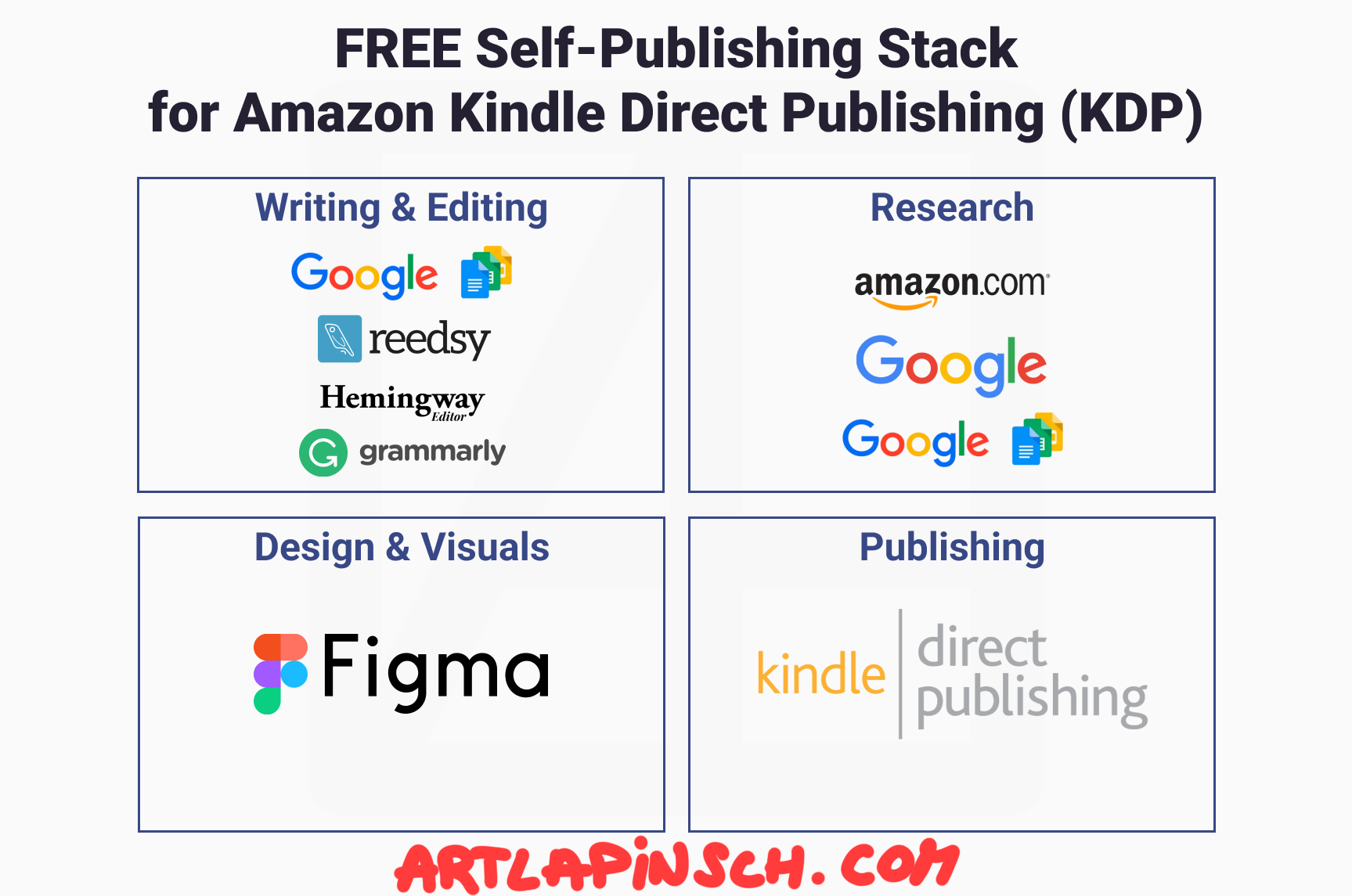
I also used two paid tools. But those tools are not necessary:
- Procreate App ($12.99 for lifetime license): iPad app to illustrate. You can just as easily do everything in Figma for free.
- Keywords Everywhere ($10 for annual credits): Helpful Chrome plugin to do search volume research. Helpful but not mission critical.
- [New] Genius Link ($6/mo): Amazon has a piss-poor link management. For example, people who live in Germany but click on the Amazon US link are not automatically redirected to their store. That's why many authors use Genius Link to do automated redirecting. // Initially, I wanted to keep it as simple as possible but many of my friends clicked on the (old amazon) links in this post and saw that my book was "not available in their region." I think this is a massive problem for conversion rates. That's why I decided to get a Genius subscription.
Self-publishing doesn't have to be expensive. I hope this overview helps.
Other Questions
My friend Bastian sent me a list of questions about this whole process. I'll try to answer those as best as I can while my memory is still fresh.
How Is Writing a Blog Post Different from Writing a Book?
I think it all comes down to the context in which the reader consumes the product.
Books Come With Higher Expectations
My gut feeling - judging from my own reading behavior - is that blog posts are lower involvement products. I can start reading them in between tasks but just as easily drop them if I don't feel like continuing.
A book on the other hand requires me to pick up the book, sit down, and focus on reading it. Usually, I a book also requires you to pay for a copy, which is usually not the case for blog posts.
I guess that all of these factors lead to higher expectations for books.
- Better Quality: It should feel like a polished product.
- More Content: A book has to have "a certain length."
Is every idea worthwhile to be turned into a book? Absolutely not. I think that most of the non-fiction business books should have rather remained a long-form article or blog post. Vice versa, some blog posts could easily be a book. I don't think that there's a right or wrong.
But this experience has shown me that from an author's perspective, a book requires significantly more effort than a blog post.
Different Formatting Conventions
Blogs can be mixed media products by its nature. A browser can easily display text, images, videos, and much more. Books rely much more on the text and some simple visuals.
Coming from online writing, I had to wrap my head around the "typical flow" of books where I would have to describe certain things with words rather than showing a marked-up screenshot.
Books Build Credibility
In the past, there were only very few people who have published books. This is due to how the publishing industry was set up. There was no self-publishing and an author would have to go through a traditional publishing house.
As a result, people started associating "book author" with "this person probably has something worth saying if the publishing house believes so."
Books were a shorthand for authority.
I think this has changed significantly because everyone with a computer and an internet connection can be a "writer." That's not inherently bad. It just means that there are more self-published books in the market. Some of them are better than traditionally published books but a lot of them are not.
Nonetheless, now I can say with a straight face that "I published a book." This might come in handy the next time I meet someone who has also written a book. We have an instant topic to connect about.
I noticed that a similar project where I produced an electronic music EP has helped me connect and open doors with musicians and producers.
tl;dr: A book carries some "street cred".
What Was Surprising About the Book Writing Process?
I was really surprised at how easy it was to self-publish.
This comes down to how the industry has changed over the past years. While in the past you had traditional publishing houses that were gate keepers, now you have the following setup:
- Traditional Publishing: You work with a publishing house (e.g. Penguin; macmillan; etc.) They give you a standard deal where you get an advance (i.e. cash payment) and participate minimally in the royalties. The publisher keeps 85-90% and you get 10-15%. But the promise is that their in-house editors, typesetters, and designers will help you create a polished end product. Your book will look and feel like a "real book." Additionally, traditional publishers would help you get into retail and place your book in various book stores.
- Self-Publishing: On the other end of the spectrum is self-publishing. You take care of all creative and commercial aspects of your book project. You write, you edit, you design, and you self-publish. When it's time to submit your book, you have a choice of various self-publishing platforms. On Amazon's KDP platform the deal is straightforward: If your book costs between $2.99 and $9.99 you get to keep 70% of the royalties.
- Hybrid Publishing: This is a newer occurrence that mixes features of both traditional and self-publishing. Scribe Media, for example, let's authors keep 100% of their royalties but charges for services (e.g. editing; design and typesetting; ghostwriting; etc.) This can be an interesting option depending on how much help you need and how much you are willing to pay in service charges. I think this is particularly interesting if you are a busy business executive who has a book idea but no time to execute it. Scribe Media would pair you with a ghost writer who interviews you to extract your ideas, drafts a book based on your tone of voice, and edits it with your feedback.
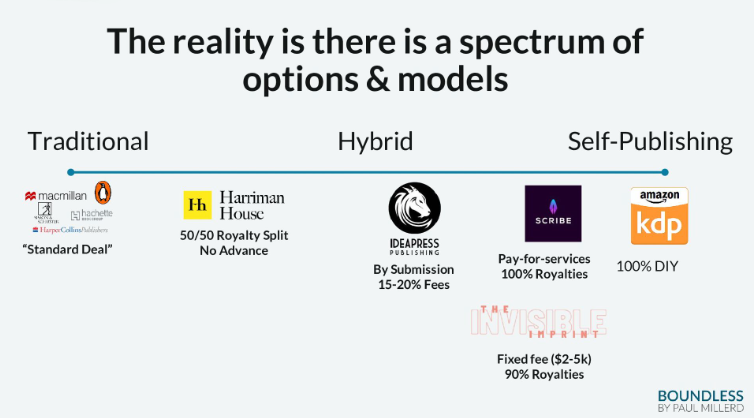
tl;dr: I was surprised how ungated book publishing has become.
What's the Biggest Hurdle When Publishing a Book?
First, the biggest hurdle is the outdated image of the publishing world that most of us hold in their heads.
A year ago, I didn't know that you could self-publish a book so quickly and for free. Now, I know.
Making this one little update to your mental model of how publishing works will make it more likely to give it a try.
Second, I think a lot of people doubt themselves and think "what could I possible have to say that others might be interested in reading?"
Fair question. Very fair question. But if you have knowledge that helps others solve a specific problem then you might have something for a useful book.
The good news is that both of these hurdles are within your control.
What Are the Biggest Learnings from this Project?
The biggest takeaway would be to think in terms of a finished product.
The content, the cover, the title & subtitle, the description, the launch strategy, etc. All of this has to be - ideally - thought through before you start writing the book.
Also, I think giving myself an artificial deadline of publishing the book in one week. Even if it was naive to think that it could be done, it definitely accelerated the process. Now it's been a little less than a month and a half. Still quite fast. I don't believe that the project would have gone from idea to launch without such an aggressive deadline.
These are the first two things that come to mind.
What Would You Have Liked to Know Before Starting this Project?
The philosophical answer is: Nothing. Otherwise I wouldn't have done it at all.
The pragmatic answer is: How easy it was (relatively speaking). Then, I might have done it even earlier.
If I can do it. You can do it.
What Is My Book About?
"Art, you told us how you wrote your book. But what is it actually about?"
Great question!
To answer it, I'll copy/paste the description from my Product Detail Page:
Every day, knowledge workers struggle with the same issue: They want to get things done, but can't because they are missing crucial information.
The bad news? This is very common.
The good news? It can be easily prevented with documentation.
In this book, you'll discover how remote-first companies leverage documentation to thrive. These organizations operate at the highest difficulty level in knowledge sharing, being both physically distributed and operationally asynchronous. Their lessons learned can be applied to any team, whether you're freelancing solo or managing a large, in-person organization.
What You'll Learn:
- Optimize Team Performance: Learn to enable single-player mode, allowing your team to work autonomously.
- Transform Meetings: Cut over 80% of meeting time, freeing up hours for deep, productive work.
- Extract Expertise: Make your subject matter experts' knowledge accessible to your entire organization.
- Single Source of Truth (SSoT): Establish a Single Source of Truth (SSoT) to ensure everyone has access to up-to-date information.
- Maintain Your System: Keep your documentation up-to-date and useful.
- Content Marketing: Use your documented knowledge to build thought leadership and drive sales.
- And much more.
If you've ever thought, "This meeting could have been an email," or encountered outdated information, this book offers practical solutions for you.
Included in This Book:
- Mental Models: Dozens of tools to evaluate your work and communication.
- Real-Life Case Studies: 14 examples to illustrate frameworks and models.
- Exercise Questions: 112 questions to help identify weak spots and implement solutions quickly.
- Best-in-Class Documentation: Inspirational examples of top-notch documentation.
The goal of this book is to provide a concise yet comprehensive guide to start documenting your institutional knowledge in less than a day.
Why This Book?
- Practical and Concise: Quick, actionable insights in bite-sized chapters.
- Real-Life Examples: Understand complex concepts through relatable metaphors and case studies.
- Principle-Based Approach: Focuses on universal principles that apply across various tools and situations.
What This Book Is Not:
- Not a Manual on Building Remote Companies: This guide focuses on documentation, not on team building, compensation structures, logistics, or HR/payroll.
- Not Fiction: A practical guide filled with real tools and techniques used by leading remote-first organizations.
Get your copy of The Async Unlock now and start transforming your team's productivity in less than a day.
To understand why I teach about Documentation, just think about this blog post.
I learned how to self-publish a book. Then, I documented everything in this blog post. And now you know how to self-publish.
And the best thing about it: You didn't need me in the same room. You did it on your own schedule. That's the Async Unlock.
If you are interested to learn more and want to support me, then I'd invite you to get a copy of the book and see for yourself.
If you have feedback, ideas, etc., I'd love to hear from you.
If you like what you read, I would appreciate you leaving a positive Amazon review for the book. This helps independent authors (like me) get discovered.
Hope this was useful ✌️
Art
What Would Be Your Book?
I hope this essay got you thinking.
A few exercise questions that could get you started:
- For which problems do friends and colleagues ask for your help?
- What is your area of subject matter expertise?
- Do you have some of that knowledge documented in notes, slide decks, etc?
Write down your answers and see if there might be something.
Good luck!
Helpful Resources
My eight LinkedIn posts documenting my progress:
- Motivation behind this book project
- Outlining the content
- First obstacles and learnings
- Cover design
- Writing recommendable books so that you don't need marketing
- Editing process and dealing with feedback
- Copywork and the benefits of stealing ideas from other writers
- Request for feedback on the cover design
A few more resources that have helped me along the way:
- Write Useful Books (Rob Fitzpatrick) - The book that set everything in motion.
- Amazon Self-Publishing: Our Tips From Coaching 7000+ Authors (Self-Publishing School) - Quick intro into the most important aspects of self-publishing.
- Learn Self-Publishing (Kindlepreneur) - Great collection of resources about all aspects of the self-publishing journey.
- Expert Advice: 3 Tips to Make $100,000 Writing Books in 2024 (Billion Dollar Creator podcast) - Great interview w/ author and Scribe Media CEO Eric Jorgenson. Interesting lens on hybrid publishing and when it might be relevant.
- Part 1: Confessions from the Underground World of Kindle eBooks (The Hustle) - Fun perspectives of high-volume Kindle publishing.
- Part 2: Confessions from the Scammy, Underground World of Kindle eBooks (The Hustle) - An even crazier story about Kindle publishing.
- Master the Email-Based Course (Will Steiner) - An email-based course about email-based courses. This is where I originally learned about EBCs and created my "first manuscript" that eventually became the basis for my book. Will Steiner - the course instructor - knows what he's talking about.
Acknowledgements
Massive thanks to my buddies Mike, Spencer, and Erik - the best team mates I could have wished for while learning all these lessons the hard way.
Huge appreciation to all the people who have supported me during this writing journey - far too many to name everyone. Paul, Andreas, and Corey, thanks for being sparring partners. Philipp, thanks for cross-reading an early version of this book.
Infinite thanks to Sara, my life partner, who puts up with all my shenanigans, is a source of boundless optimism, and calls me out on my bullsh*t.
And to my mom, Maria, without whose unconditional support this entire journey would have been impossible.
